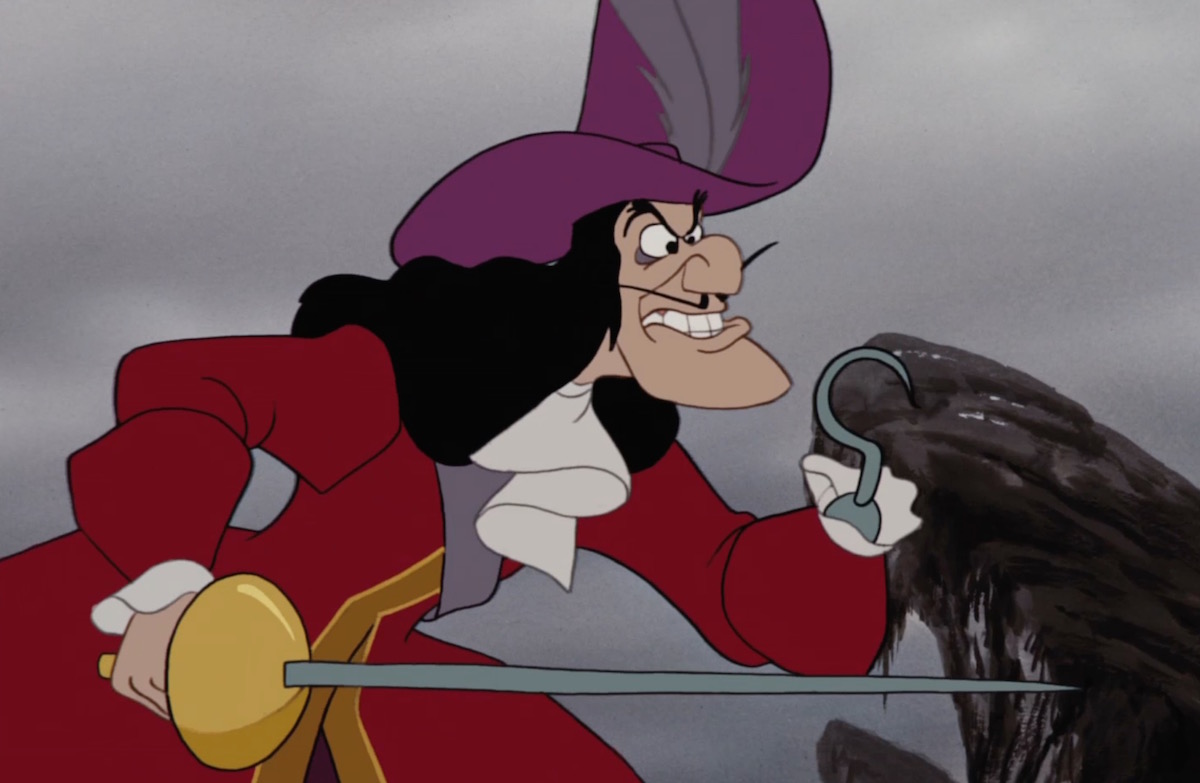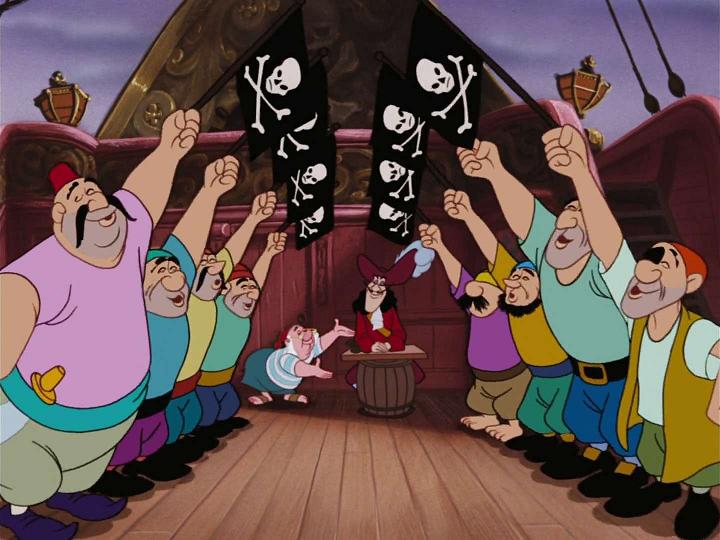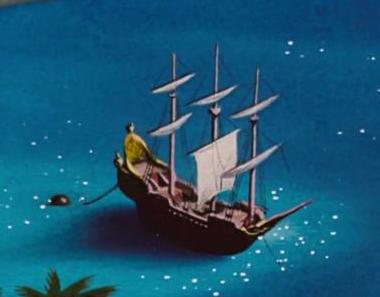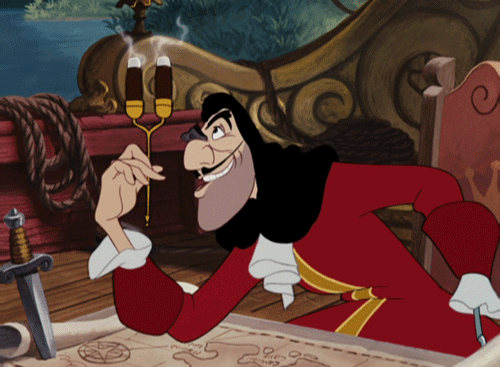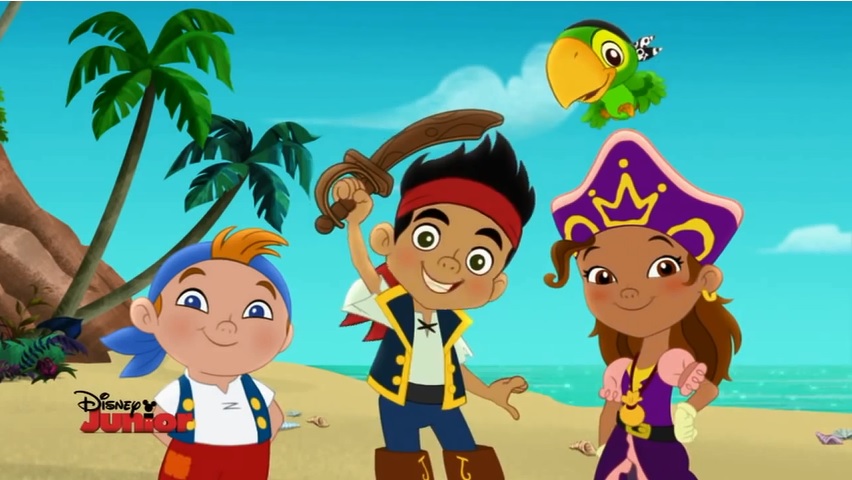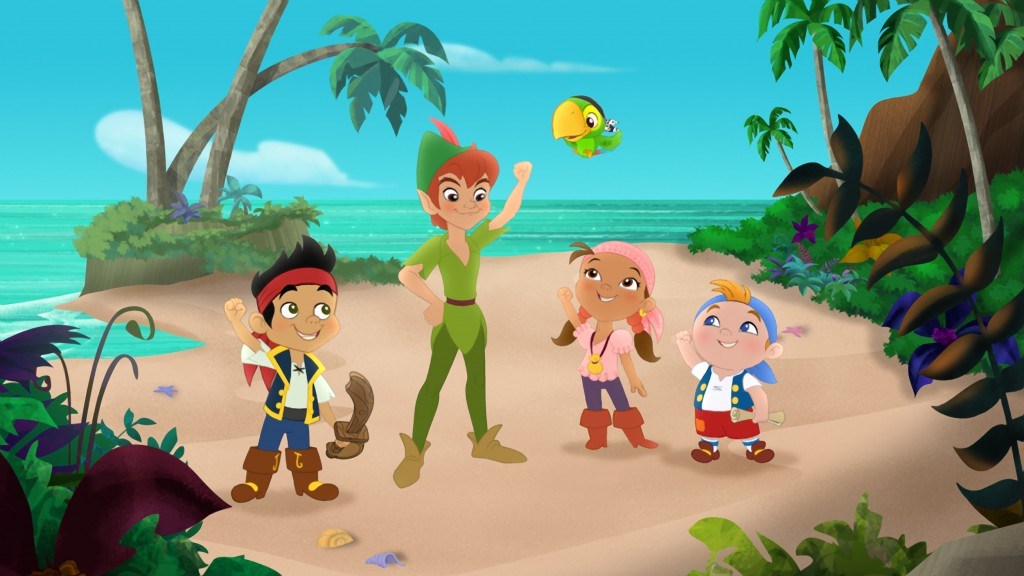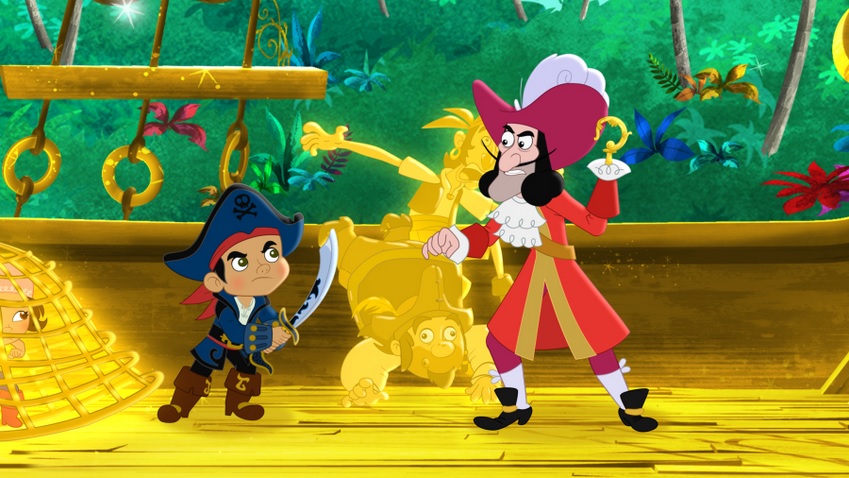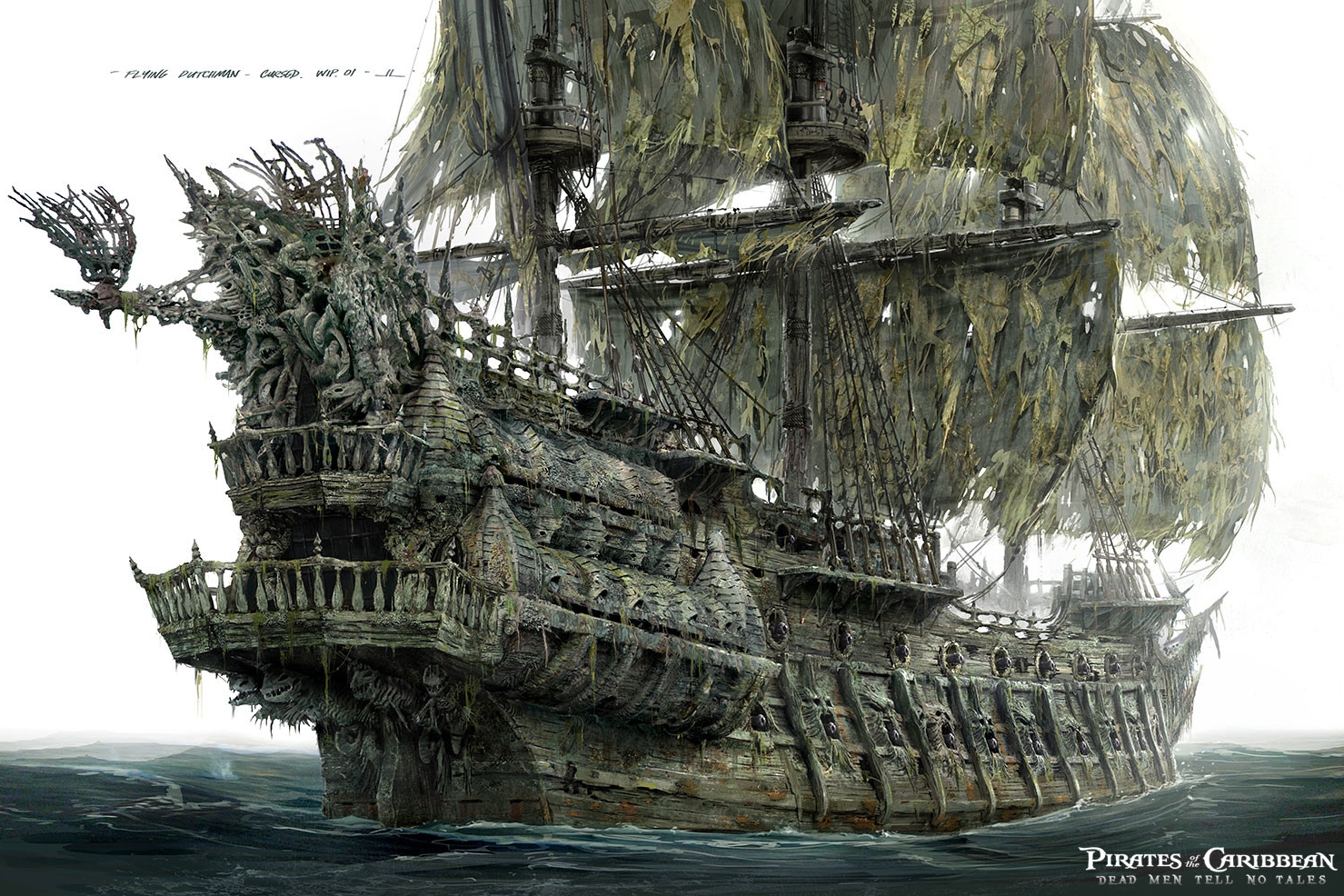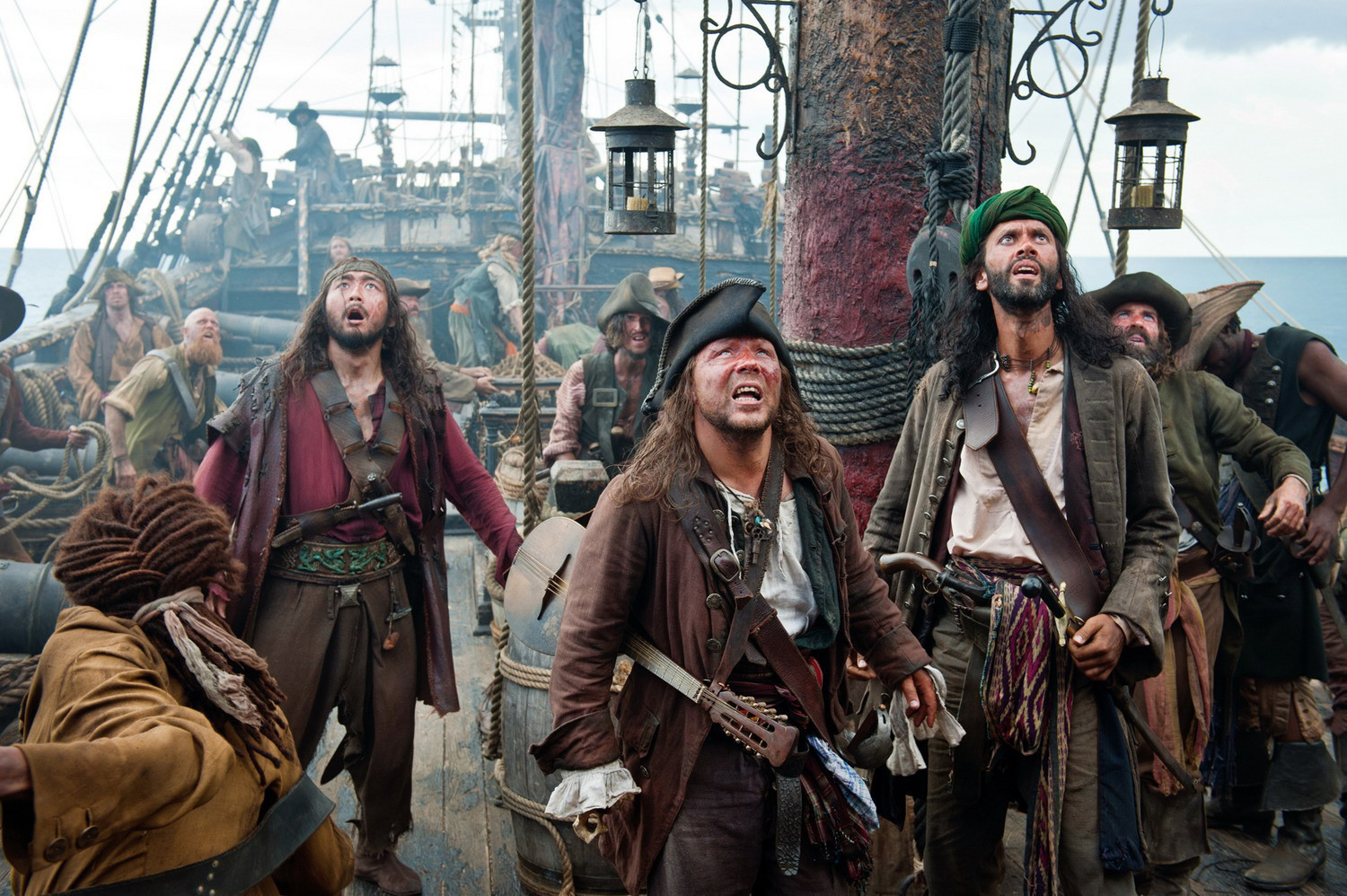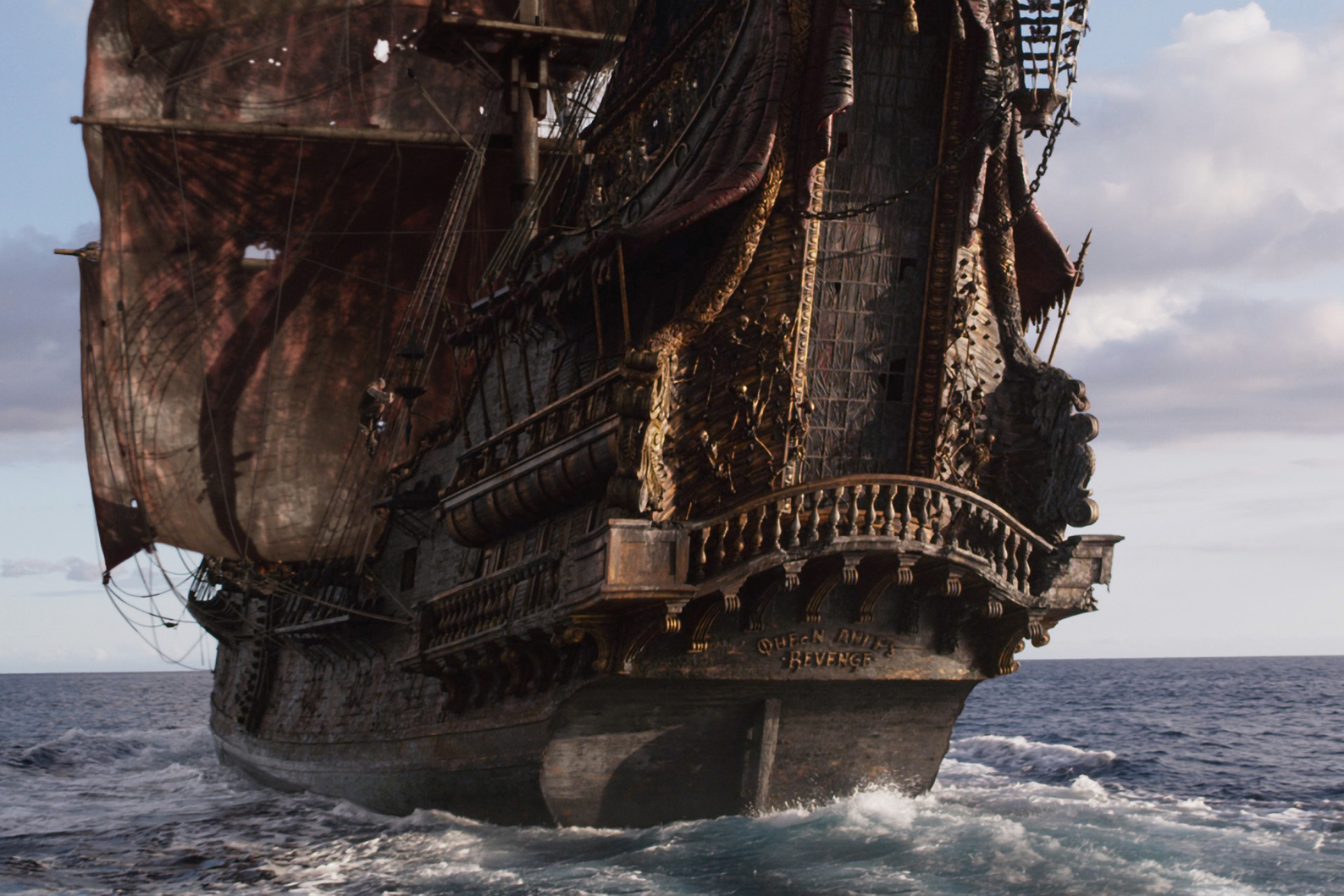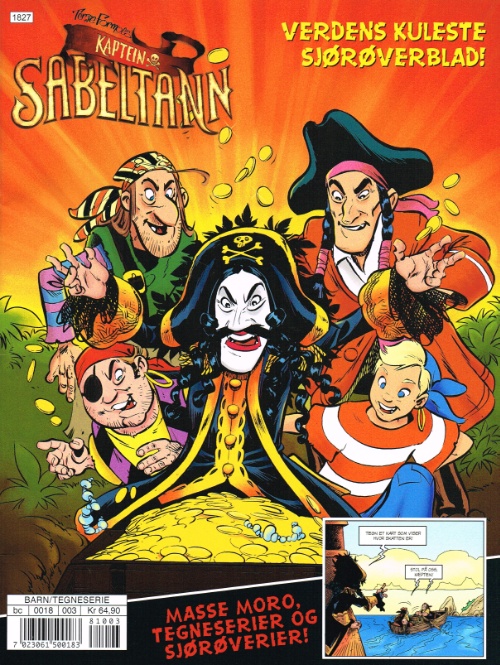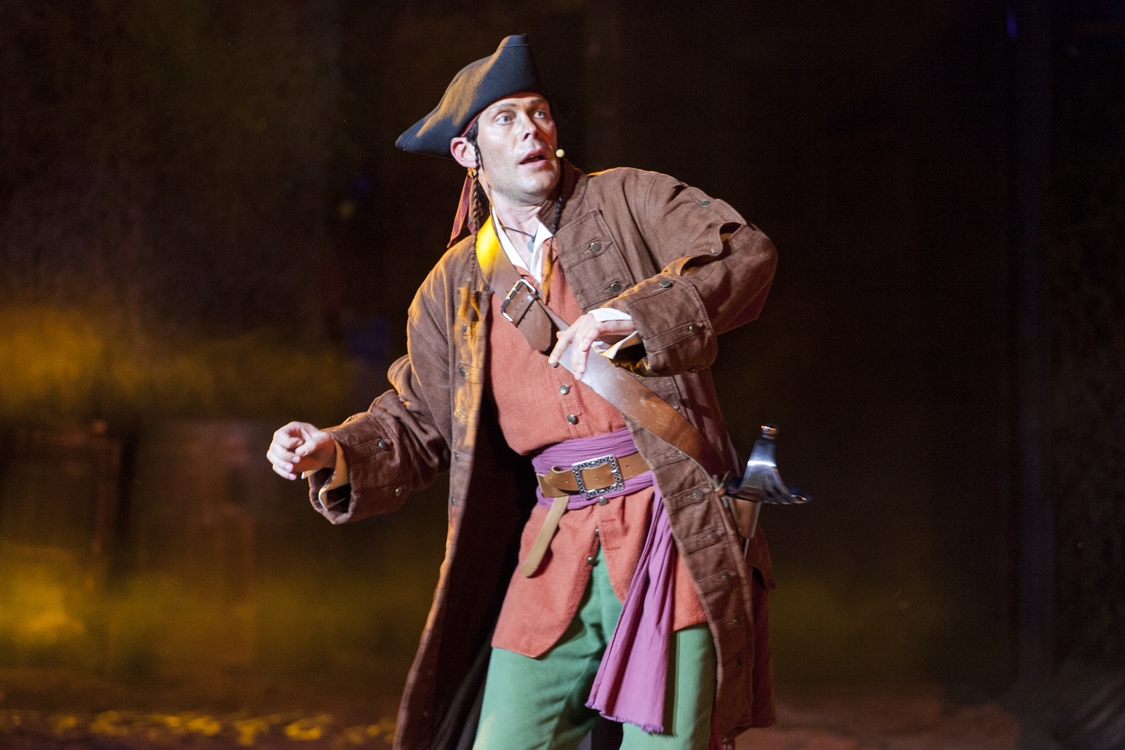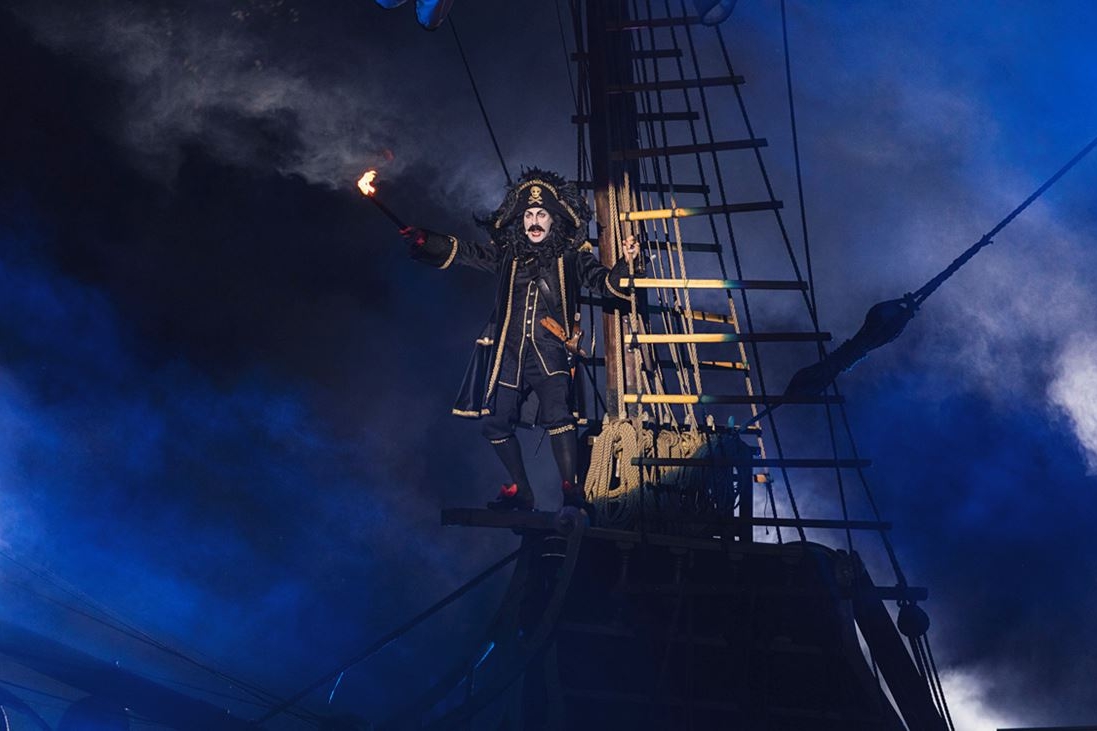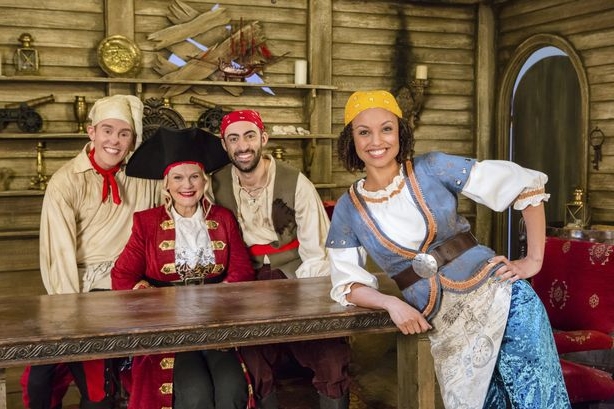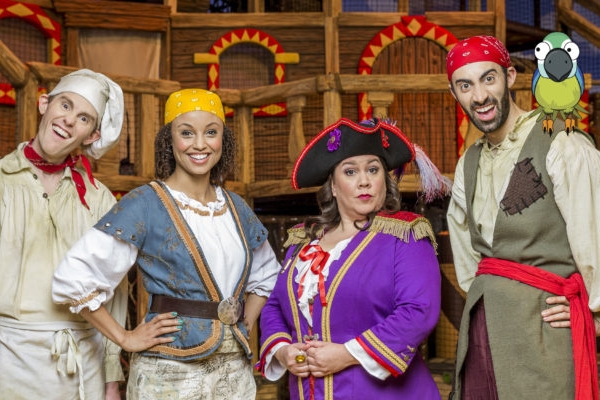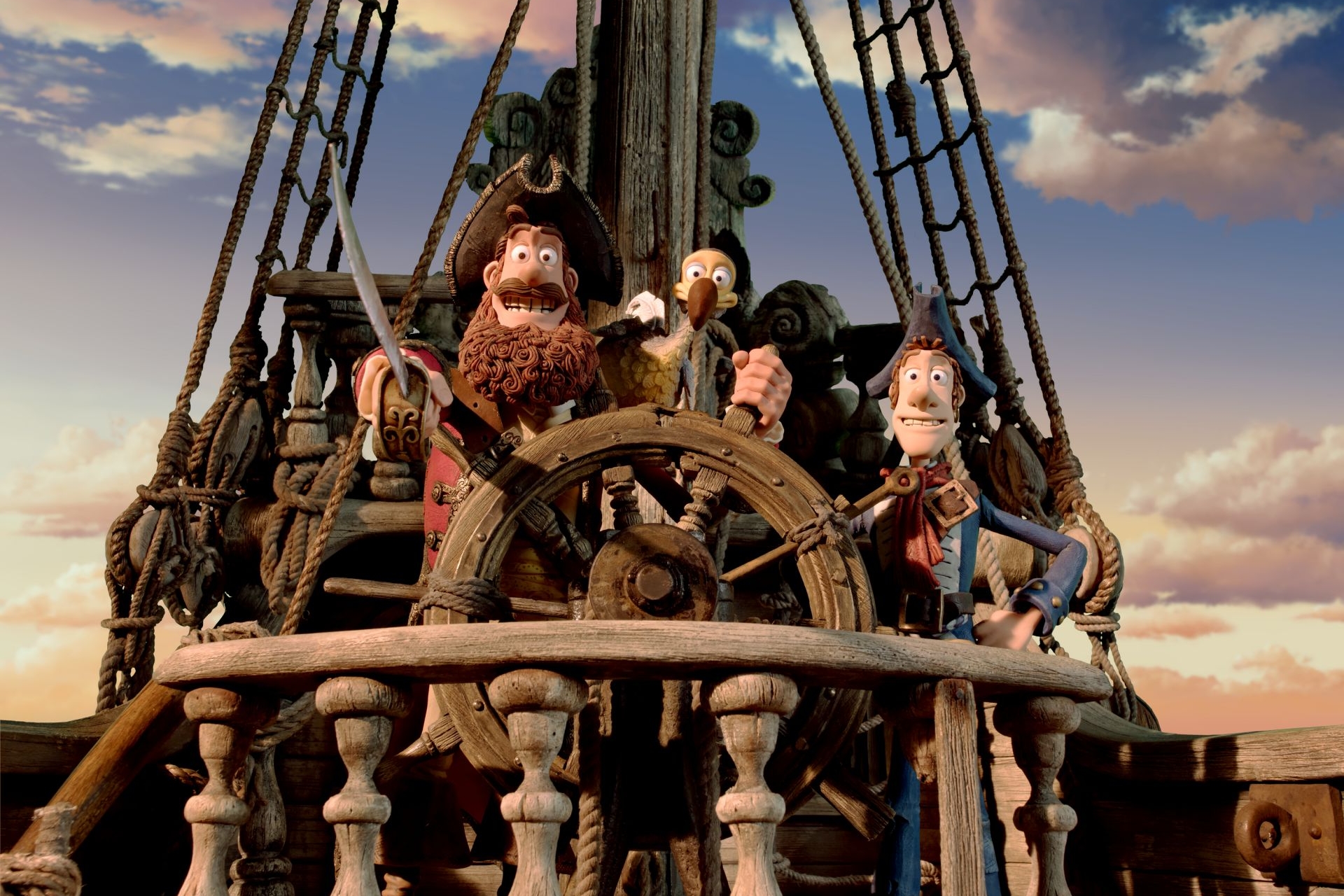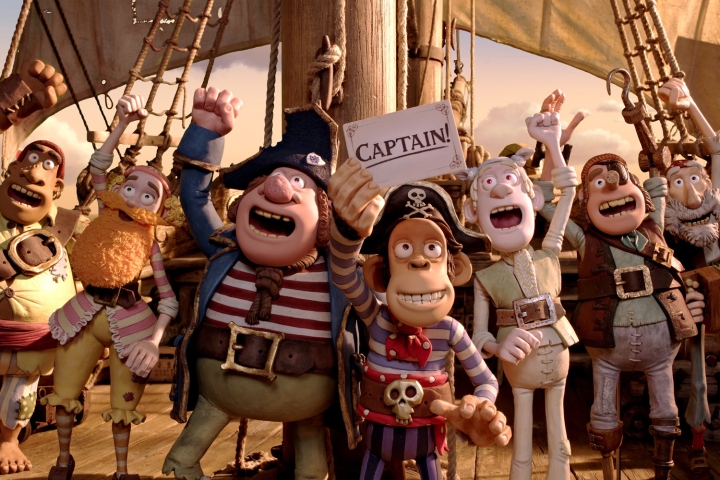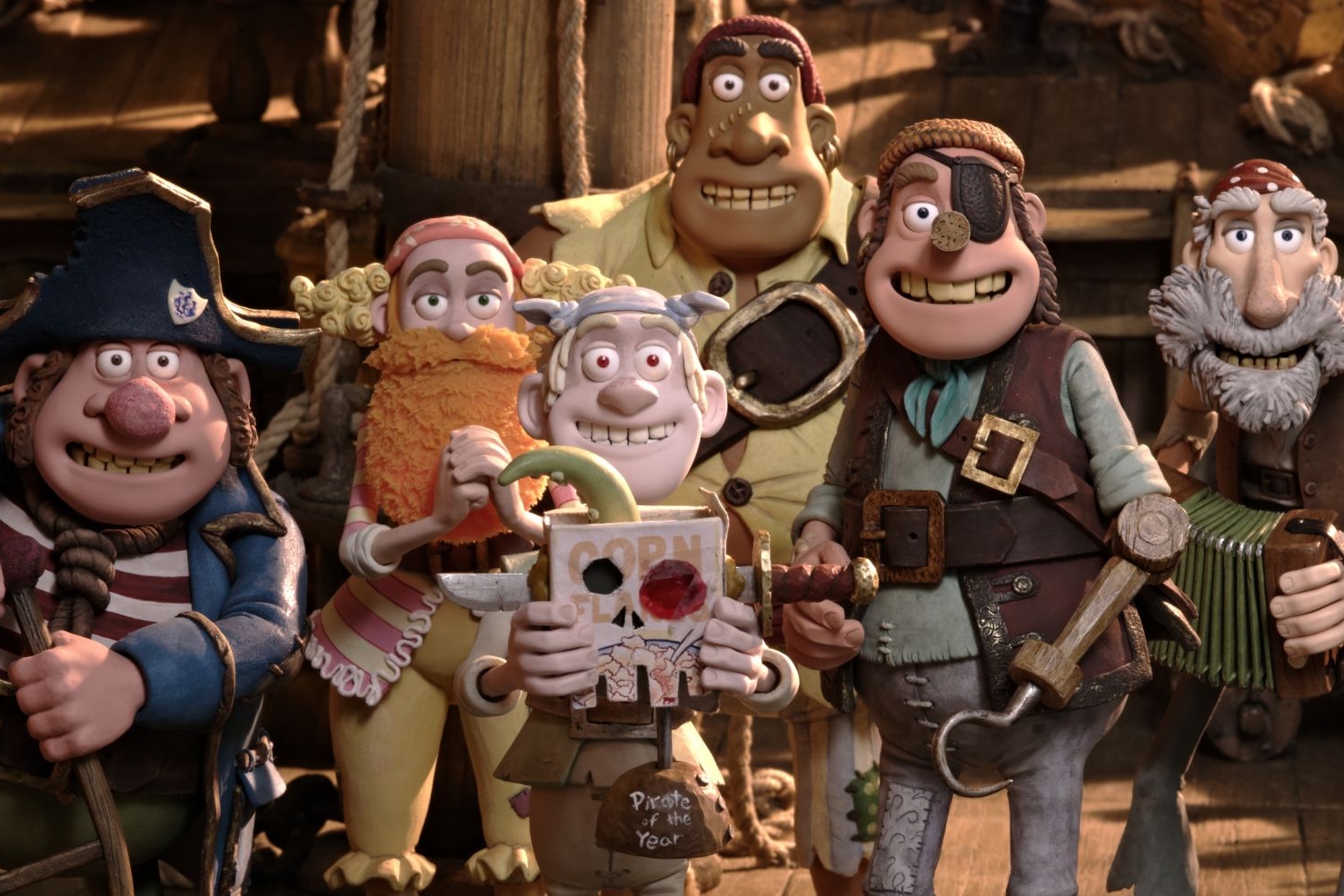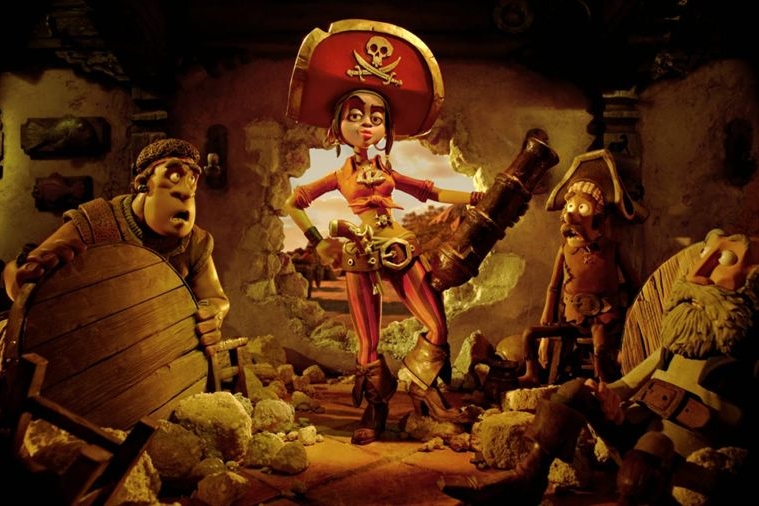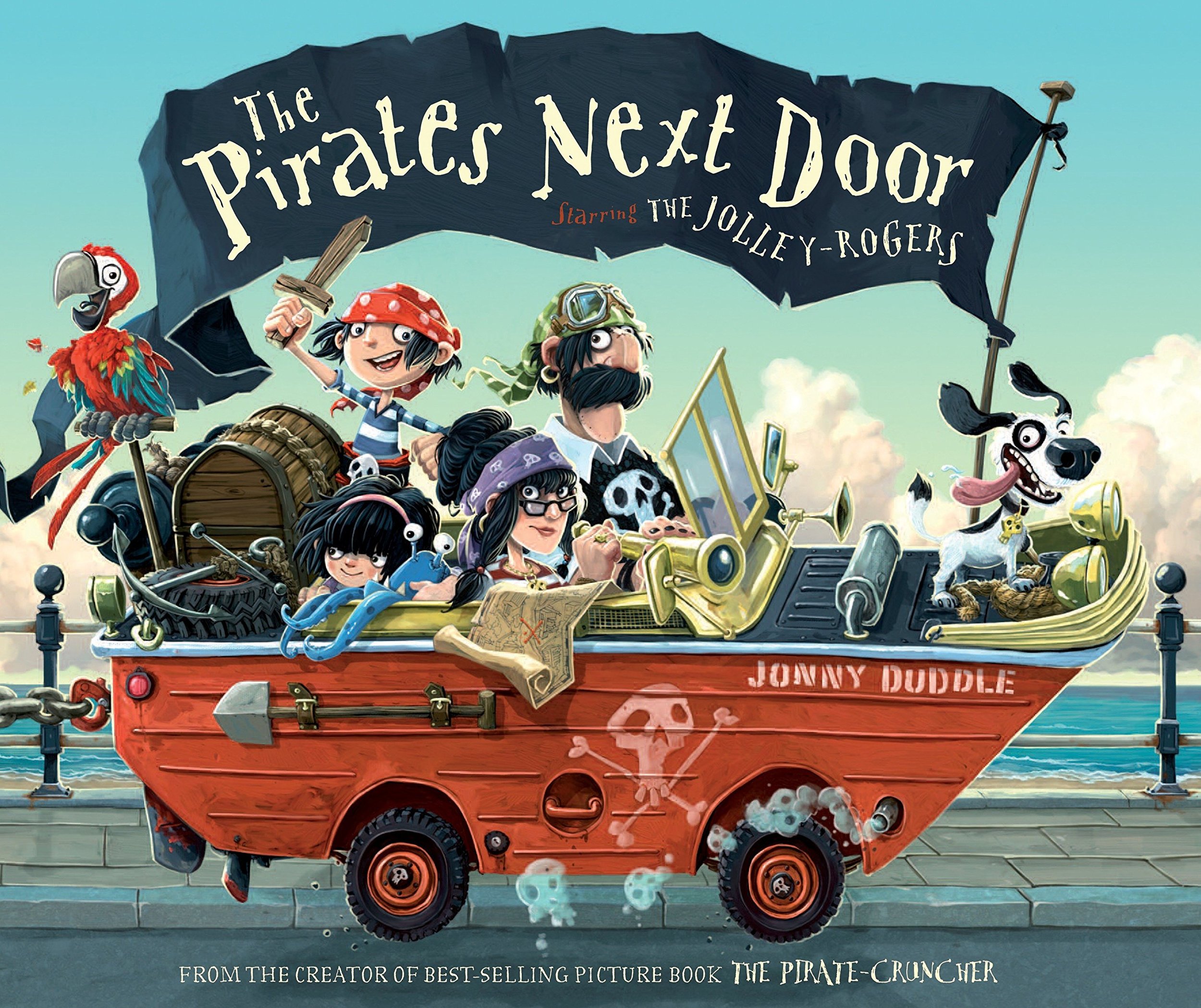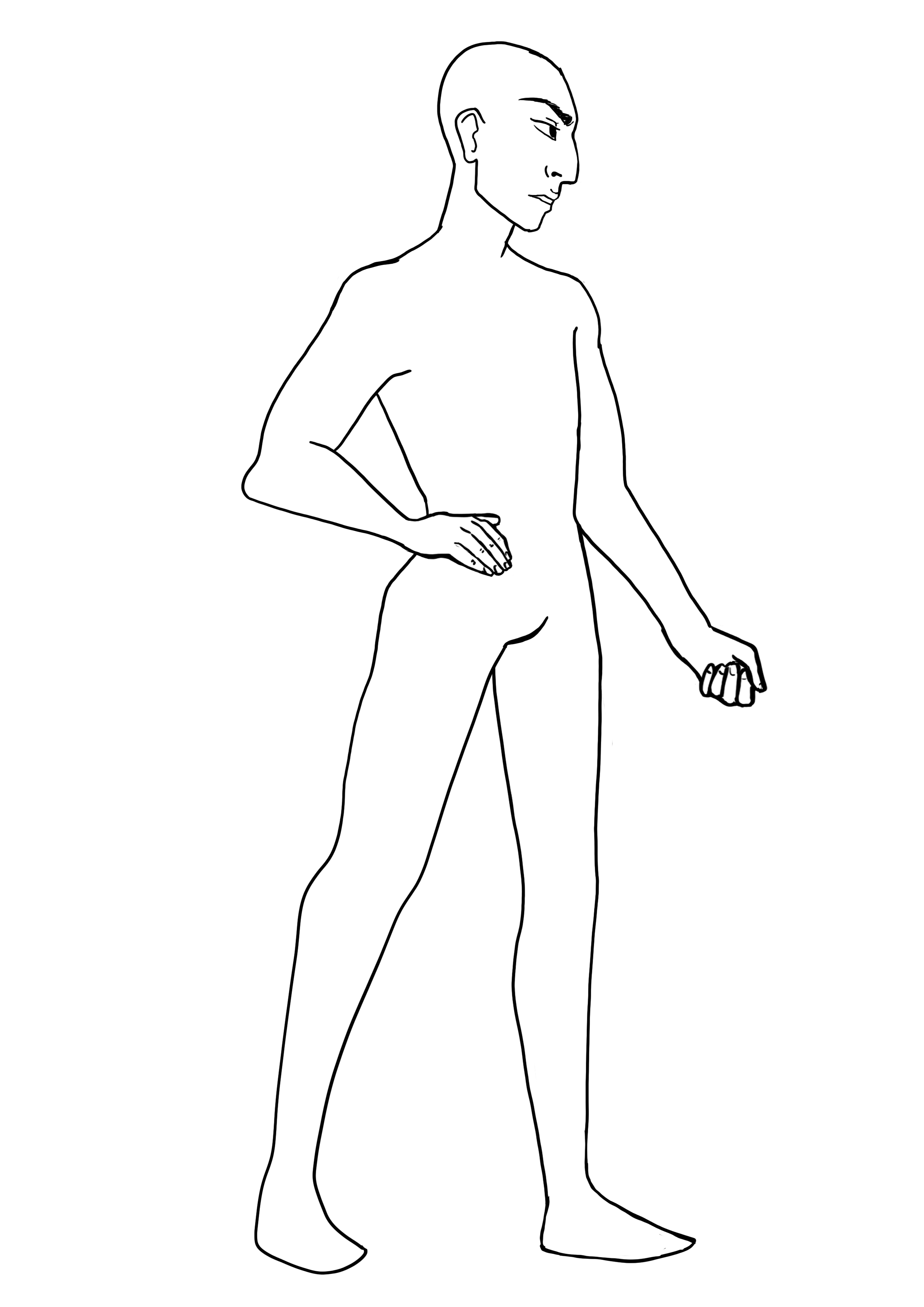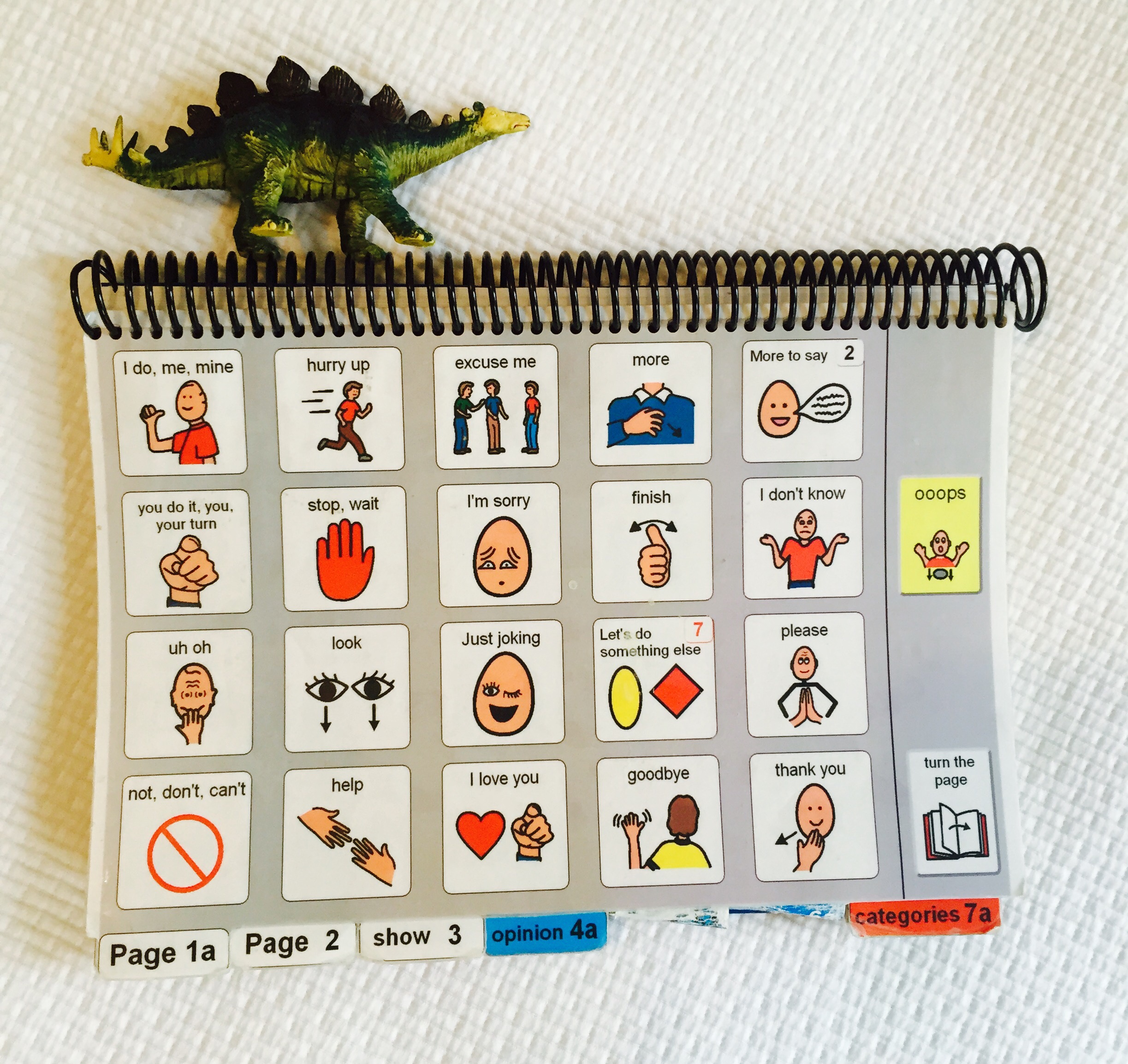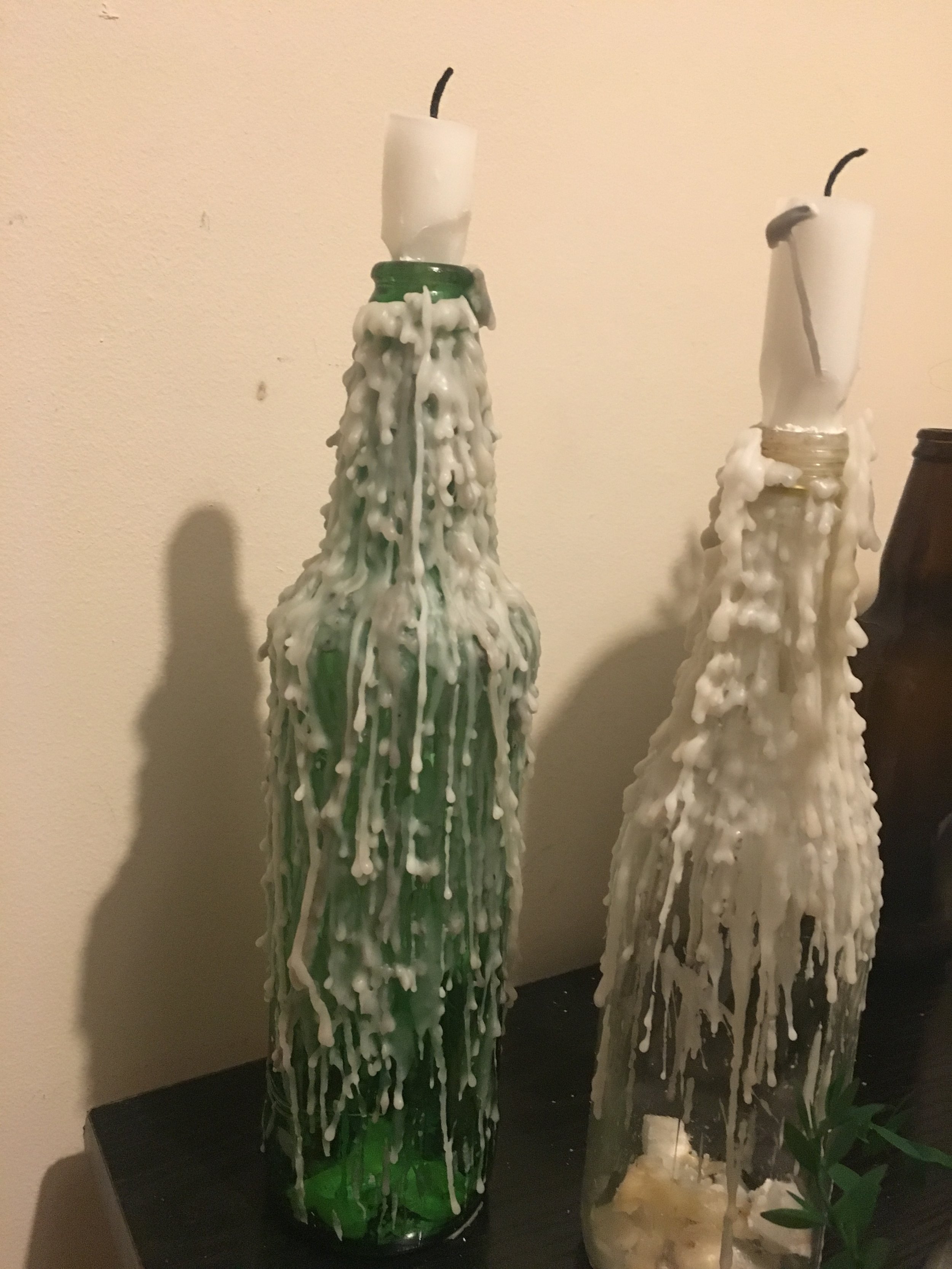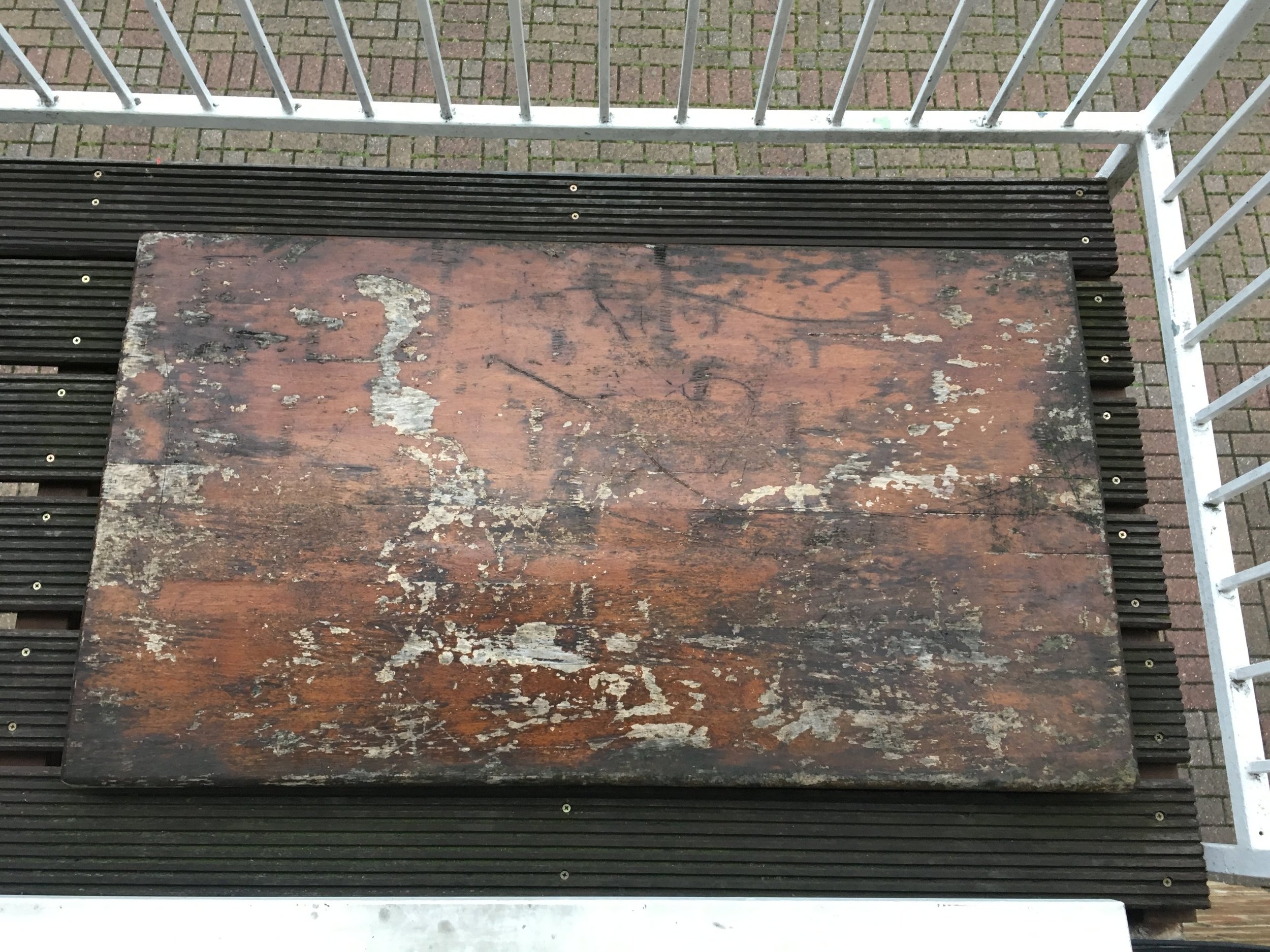Final Major Project
RESEARCH
Children’s Book: The Pirate Captain and The Sea
Here I delve into research about pirates. Before I started writing and designing it was important to me to get a good understanding of pirates and who they were. I have gone into detail about their social structure and looked at some of the most notorious pirates from the “Golden Age of Piracy” (1650-1720). I also look at clothing from that time and what ships they would use. I then go onto looking at pirates in children media and children’s books to get an understanding for how pirates are marketed towards children. I also discuss some of the primary research I have done, mostly in relation to the schools I have been in contact with.
This research forms the fundamentals of my knowledge on the topic and functions as the base on which I make my creative decision.
Pirates on the Deck of their Ship by Niels Simonsen
Why Pirates?
I want to make it accessible to boys and girls, pirates are generally a “boy-thing”. I am hoping to break this stereotype, by having cool strong women as the main characters. By having strong women in the lead I can inspire a healthier gender image in boys and girls. Essentially, I am hoping that the boys will want to read it because there are cool pirates and that girls will want to read it because there are cool girls.
Another reason why I chose pirates is because I found that out of all “genres”, pirates are the least used. I went to many book stores to research what children’s books are currently on the market and found that there are a lot of books about princes and princesses, but very few about pirates. Even within the LGBT children’s book niche demographic there are a lot of books set in a fantasy medieval setting, which led me to want to do something different. This project is about challenging ideals and creating something unconventional, thus I wanted to choose a setting that felt fresh and that hadn’t been seen many times before.
Furthermore, choosing a setting that is less “popular” gives me the chance to stand out. The most widespread sub genres of children’s books are princes and princesses and anything animal themed, thus doing something that isn’t within one of those categories give me more exposure. My project will not be drowned in the ocean of animal themed children’s books.
Why a children’s book?
I want to briefly discuss why I think a picture book is the best medium for this projct. I feel my idea can work within a lot of different media, it could be a short animation, an animated film, it could be 2D, 3D or stop motion. All of these are possible angles of presentation. I could even make a narrative driven puzzle mobile game targeted for children. However, I chose to make a book, a picture book to be specific, because I feel like it represents childhood in the best way. I love animation, and both films and TV is a huge part of what shaped my childhood, however, the film and TV market is over saturated. The turnover time for video media is much faster than with books. If I create an animated piece of work and show it on a screen, that would be great, but it would likely only live on in people’s mind for a couple of days, and then something new would come to replace it. A book lasts. You can hold it and read it, put it in your bookshelf, be reminded of the time you read it every time you read the title on the spine, and then eventually you pack it away in the attic only to dig it out years later and read it again. A book lasts. I still feel such pure joy when I flip through books like “The Giving Tree”, “Green Eggs and Ham” or “Where the wild things are”. Furthermore, children can engage with books in a different way than they can with filmed media. They are defining parts of my personal history and I want to be able do the same for others.
LGBTQIA+ inclusive children’s book are a growing market, books like “A day in the life of Marlon Bundo”, “Julian is a Mermaid”, “Princess Princess” and “Prince and Knight” are examples of this. As I work in a book store I observed these books becoming very popular. The purpose of this book is to make something that represents the world we are currently living in, the lack of wholesome LGBT+ inclusive media for children is despicable. There are still many adults who feel kids should not be exposed to LGBT+ media, which I don’t understand, because if you are going to show them love stories between women and men, you should be able to do the same with every other coupling out there. Thus, I want to contribute to this growing market and help introduce children to the many different types of love that can be found in the world.
In terms of demographic, a children’s picture book is usually targeted at ages 3-8. I want to target ages 5-10 years, because I think my story is a little too advanced for children that age. (Klein, 2016, p. 16) I also want this book to feel a bit more refined in its style than some other picture books, I am aiming to create something that children can appreciate in their later years as well, without feeling that it is too childish or lame. Furthermore, I don’t subscribe to the idea of speaking down to children or dumbing things down for them, I would rather want to challenge them and encourage them to engage with the material and learn from it. Thus, I won’t be watering down my language or story too much, but I will make sure that it is still understandable and approachable for my target audience.
Pirate Research
Treasure Island by Frank Godwin
Treasure Island
Treasure Island by Robert Louis Stevenson (1883) is largely credited as the main reason why pirates became popularised in media. It features the majority of the stereotypes we know about pirates today. (Royal Museums Greenwich | UNESCO World Heritage Site In London, 2018)
Other than Treasure Island it is also important to note J.M Barrie’s “Peter Pan” (1904) as another source of pirate characters. The exaggerated Captain Hook makes up a huge part of what we think about when we think about pirates today. (Royal Museums Greenwich | UNESCO World Heritage Site In London, 2018)
I also want to note something interesting with pirate representation in media. Usually when anything historical is portrayed in media they make vital mistakes, i.e. vikings had horns on their helmets (they did not). The “pirate look” was actually a mix between fact and fiction, but it was artist Howard Pyle who first drew them with earrings, bandanas and long sashes. He based this on Spanish Romani men that he had seen while he traveled around Europe. (A Pirate’s Life for Me, 2018) Thus, some of the aspects of what we recognise as pirate apparel are artistic liberty and some are fact. Although, if you look at Captain Hook’s outfit, it is almost identical to the description given of Bartholomew Roberts’ outfit, so there is some truth in the designs we are used to. I just find it interesting that the representation we see in popular media seems to coincide with actual historical facts, even if there are small “artistic liberties” they aren’t so far fetched that they corrupt the historical integrity of pirates and their apparel.
A General History of Pyrates by Captain Charles Jhonson
A General History of Pyrates
Another leading piece of work was Captain Charles Johnson’s “A General History of Pyrates” (1724). This is the leading source of information concerning that major pirates of the golden age. However, the credibility of this work rests upon the identity of the author. Cpt. Charles Johnson is a pseudonym and we still do not know for sure who wrote the book. A popular theory is that it was Daniel Defoe as he was said to have frequented the docks of London where many tales of pirates were told, and he was a renowned writer with good knowledge of the maritime events. Thus, if it were Daniel Defoe that wrote the book, one could feel safe in that it’s knowledge was mostly accurate. However, a lot of people don’t think that Defoe wrote it. Thus, whenever the book is referenced as a source you need to be aware of weather or not the author of the book believes that Daniel Defoe wrote “A General history of Pyrates” or not, because it wildly changes the way they relay the information. Example: Rediker and Lapouge believe firmly in Defoe as the writer, thus they present the book as facts, whilst authors like Kris E. Lane is more skeptical and presents with more apprehension. It is important to be aware of this possible discrepancy, however, the book is still renowned as the essential book about pirate behavior, thus it is a reasonably safe source to use.
Cool Facts about Pirates
What is a pirate? In the mid to late 1500s there was tension between Spain and Britain, and Elizabeth I would use privateers to attack Spanish ships without declaring outright war. A privateer was essentially a hired soldier that worked independently on contract and not under the flag of the country. The had “letters of marque”
that prevented them for being charged with piracy. This line of business was hugely beneficial both financially and conditions wise, the pay being better and the hours shorter. However, after the war between Spain and England was completed, privateering was outlawed, leaving the aforementioned privateers without contracts and without work. These early privateers are often regarded as the first pirates, as they would “go rogue” and plunder and attack ships on their own volition, no longer governed my state or contract. (Royal Museums Greenwich | UNESCO World Heritage Site In London, 2018) I could go into huge detail about the progression from privateers to pirates and piracy throughout the ages, but that is not directly relevant to my research and would demand far more than its worth. Thus I am focusing my research on piracy during the Golden Age of Piracy. In short, piracy is thieving on the water.
Contrary to popular belief the pirates had a very democratic approach to their societal structure. They despised abuse of power within the ship’s hierarchy and would go to great lengths to secure that there was a healthy environment on board. In many cases the captain was elected by the crew, and if he wasn’t satisfactory he would be sacked, either by killing or marooning.
“The crew granted the captain unquestioned authority “in fighting, chasing or being chased,” but, “in all other matters whatsoever” he was “governed by a Majority.” (Defoe, p. 139) As the majority elected so did it depose.” (Rediker, p.262)
Pirates demanded someone both bold of temper and skilled in navigation, when they elected their captain. They gave him no privileged. He “or any other officer is allowed no more [food] than any other man, nay the Captain cannot keep his Cabbin to himself.” (Rediker, p. 262) This observation was made by a sailor as he was captured by pirates and kept aboard for a while. He observed that the crew members slept wherever they pleased. “The Captain himself not being allowed a Bed". (Rediker, p.262) The determined reorganizations of space and privilege aboard the ship was crucial to the remarking of maritime social relations. (Rediker, p.262) “[…] they only permit him to be Captain, on condition, that they may be Captain over him; they separate to his Use the great Cabin, and sometimes vote him small Parcels of Plate and China, (for it may be noted that Roberts drank his Tea constantly) but then every Man, as the Humour takes him, will use the Plate and China, intrude into his Apartment, swear at him, seize a Part of his Victuals and Drink, if they like it, without his offering to find Fault or contest it […]” (Defoe, 2018, p. 144/cxliv) This quote further backs up the idea that pirates did what they wanted and that outside of combat the captain had very little authority. After having gotten my hands on “A General History of Pyrates” I got to double check a lot of the information that my other books had discussed, as I mentioned, most of the books I have read use “General History of Pyrates” as a source and I have been unsure of how consistent of a source it is. Little is known of the author and it is an old book which has many different printings so I have suspected that there might be discrepancies between the different version. However, I have now been reading a version that the University of Greenwich library ordered, which, to be honest, did not look like the best version. But it has proven to be consistent in its information and has lined up with everything the other books have been writing, this leads me to trust what I have been reading, because all of my sources match up with eachother. So at least I can be confident in the fact that my research is sound. An example of the democracy of pirates is when a pirate captain named Vane and his crew came upon a French Man of War. The ship opened fire at them and Vane wanted to flee, not risking the fight with such a large ship, as they themselves had only a Brigantine. However, Jack Rackham, who was the quartermaster on the ship and was well reputed both by the crew and the captain, disagreed with Vane and urged him to attack the ship. The majority was with Rackham and wanted to board the ship, but Vane felt it too rash and did not want to risk the fate of his ship. “At length the Captain made use of his Power to determine this Dispute, which in these Cases, is absolute and uncountroulable, by their own Laws, viz. in fighting, chasing, or being chased; in all other Matters whatsoever he is governed by a Majority; so the Brigantine having the Heels, they they term it, of the French Man, she came clear off.” (Defoe, 2018, p. 94/xciv) Here we see the captain utilizing his aforementioned power, however it is what followed that makes this situation interesting. “But the next Day, the Captain’s Behaviour was obliged to stand the Test of a Vote, and a Resolution passed against his Honour and Dignity, branding him with the Name of Coward[…]” (Defoe, 2018, p. 94/xciv) Thus Vane was sacked as captain and him and the others who had sided with him to not board the Man of War, were “turned out of the Company” and given a small sloop and sufficient provisions and ammunition so “[…] that they might be in a Condition to provide for themselves […]” (Defoe, 2018, p. 94/xciv). Following this “John Rackham was voted Captain of the Brigantine, in Vane’s Room.”(Defoe, 2018, p. 94/xciv). This story is a prime example of the way the pirates operated and the laws that they governed by. If a captain wasn’t satisfying the crew he would likely be sacked and a new captain would be elected.
What Rediker stated about the importance of keeping good “maritime social relations” is a prevalent theme for the pirate community. Albeit they were ruthless murderers and thieves, they valued keeping the ship’s social environment a “safe space”. In Bartholomew Roberts’ pirate code he states that “every man’s quarrels to be ended on shore, at sword and pistol. (The quartermaster of the ship, when the parties will not come to any reconciliation, accompanies them on shore with what assistance he thinks proper and turns the disputant back to back, so many paces distance; at the word of command they turn and fire immediately (or else the piece is knocked out of their hands) if both miss, they come to their cutlasses and he is declared victor who draws first blood)” (Defoe, 2018, p. 143/cxliii) It has been speculated that the reason it is specified that the “man’s quarrels“ are to be taken off the ship was to keep the associations of fighting (among each other) to land and thus make the ship a safe area. “By taking such confilcts off the ship (and symbolically off the sea), this practice promoted harmony in the crowded quarters below deck.” (Rediker, p. 265)
The crew would also elect a Quartermaster as a counterpart for the captain. This was to prevent the misuse of authority. Pirates delegated countervailing powers to the quartermaster who was elected to represent and protect the “interest of the crew” (Rediker, p. 263). He “[…] claims all Authority this Way, (excepting in time of Battle)” (Defoe, 2018, p. 144/cxliv) An example of a quartermaster was Jack Rackham who stood up against Captain Vane to represent the majority opinion. The quartermaster took care of punishment for all “[…} small Offences, which are not provided for by the Articles, and which are not of Consequence enough to be left to a Jury, […]” (Defoe, 2018, p. 144/cxliv) He is a “civil Magistrate” on board the ship. He deals out punishment based on the crime as he sees fit, often in the form of “drubbing or whipping”, the guilty would suffer a whiplash from each of the crew, (Defoe, 2018, p. 144/cxliv) As pirate crews usually averaged at about 80 men, (Rediker, p. 265) this is a significant punishment.
As I briefly mentioned the ship would also have a set of rules, a code, this is testimony to the striking uniformity of rules and customs that prevailed aboard pirate ships. Each of which functioned under the terms of written articles, a contract drawn up at the beginning of a voyage or upon election of a new captain, and agreed to by the crew. By these articles crew allocated authority, distributed plunder and enforced discipline. (Rediker, p. 261)
Captain Bartholomew Roberts's articles
I. Every man has a vote in affairs of moment; has equal title to the fresh provisions, or strong liquors, at any time seized, and may use them at pleasure, unless a scarcity makes it necessary, for the good of all, to vote a retrenchment.
II. Every man to be called fairly in turn, by list, on board of prizes because, (over and above their proper share) they were on these occasions allowed a shift of clothes: but if they defrauded the company to the value of a dollar in plate, jewels, or money, marooning was their punishment. If the robbery was only betwixt one another, they contented themselves with slitting the ears and nose of him that was guilty, and set him on shore, not in an uninhabited place, but somewhere, where he was sure to encounter hardships.
III. No person to game at cards or dice for money.
IV. The lights and candles to be put out at eight o'clock at night: if any of the crew, after that hour still remained inclined for drinking, they were to do it on the open deck.
V. To keep their piece, pistols, and cutlass clean and fit for service.
VI. No boy or woman to be allowed amongst them. If any man were to be found seducing any of the latter sex, and carried her to sea, disguised, he was to suffer death; (so that when any fell into their hands, as it chanced in the Onslow, they put a sentinel immediately over her to prevent ill consequences from so dangerous an instrument of division and quarrel; but then here lies the roguery; they contend who shall be sentinel, which happens generally to one of the greatest bullies, who, to secure the lady's virtue, will let none lie with her but himself.)
VII. To desert the ship or their quarters in battle, was punished with death or marooning.
VIII. No striking one another on board, but every man's quarrels to be ended on shore, at sword and pistol. (The quarter-master of the ship, when the parties will not come to any reconciliation, accompanies them on shore with what assistance he thinks proper, and turns the disputant back to back, at so many paces distance; at the word of command, they turn and fire immediately (or else the piece is knocked out of their hands). If both miss, they come to their cutlasses, and then he is declared the victor who draws the first blood.)
IX. No man to talk of breaking up their way of living, till each had shared one thousand pounds. If in order to this, any man should lose a limb, or become a cripple in their service, he was to have eight hundred dollars, out of the public stock, and for lesser hurts, proportionately.
X. The Captain and Quartermaster to receive two shares of a prize: the master, boatswain, and gunner, one share and a half, and other officers one and quarter.
XI. The musicians to have rest on the Sabbath Day, but the other six days and nights, none without special favour.
(Defoe, 2018, p. 141-144/cxli-cxliv)
Plunder distribution was often based on rank, skill and duty. If you proved yourself in battle, you were likely to get more plunder.
Usually the division would look somethixang like this (Rediker, p. 264):
Captain and Quartermaster: 1 1/2 - 2 shares
Gunners, Boatswain, Maters, carpenters and Doctors: 1 1/4 - 1 1/2 shares
Remaining crew: 1 share
They would also have a welfare system established for crew mates who got wounded during battle. Injuries that sustained “lasting effect” such as blindness or losing a limb would be compensated, each ship would have their own rules for this, but It has been stated that an injured man could receive 400 gold for a lost joint and 800 gold for a lost limb. (Defoe, 2018, p. 261/cclxi) This system was in order to inspire bravery among the men to to help with recruitment. (Rediker, p. 265) Furthermore, men who sustain grave injuries were usually allowed to stay on-board as long as they wanted, and traditionally they took over the role as cook. In the majority of the pirate codes it is also stated that men will be given better beds if needed or requested, say in situations of illness or wounds. This further the idea that pirates treated wounded members well and did what they could to ease their recovery.
Probably the most interesting system put in place by the Pirates was the council. The council usually included every man on the ship. “The decisions that had the greatest bearing on the welfare of the crew were generally reserved to the council, the highest authority on the pirate ship […] the master consulted his entire crew in making crucial decisions.” (Rediker, p 263)
“The decisions made by this body were sacrosanct, and not even the boldest captain dared to challenge the council’s mandate.”
The pirate demographic was wildly international. Most of the ships used were either English or Spanish, with the occasional French and Dutch. During the golden age of piracy, 1650 - 1720, the British Empire was almost at its largest. Which meant they had their hands in Africa and Asia as well as the majority of Europe and the West Indies. Thus, the British fleet itself was quite international in its make up, meaning that deserters from the fleet (which there were many of) had the likely chance of being from pretty much anywhere in the world. In addition, The New World pirates, which are the pirates in the Caribbean and surrounding areas, were heavily dominated by the Spanish, and if you pair that with the ethnicity of the local inhabitants, you get a very motley crew of different ethnic backgrounds. Pirates were found all across the planet, but during the Golden Age the most common area was the Caribbean and the West Indies. “These sea robbers followed lucrative trade, and like their predecessors, sought bases for their depredations in the Caribbean sea and the Indian Ocean. The Bahama Islands,undefended and ungoverned by the crown [British], began in 1716 to attract pirates by the hundreds.” (Rediker, p. 257)
The general age of pirates was between 20-30 years old, with the captain being between 30-35 years old. If you took 10 sailors of an average pirate ship their age distribution would look something like this:
1 in their late teens, 3 in early twenties, 3 in late twenties, 2 in their thirties and 1 in the forties to fifties.
The oldest seaman on the boat was called “Old Salt”. They were kept around for their knowledge of the sea, and respected for their maritime affinity. Especially in regards to their knowledge about storms and the sea’s behavior. However, Old Salt were rarely shown any real regard and were mostly left on their own. (Rediker, p. 157)
The reason there were so few old pirates was because the average life expectancy of a pirate was very low, which most of the where completely fine with.
So the treasure was divided by Howard Pyle (1905)
Anne Bonny and Mary Read
I had decided to not go into detail about these infamous pirates, however, after reading their story I couldn’t ignore it. Anne Bonny and Mary Read are the two most famous female pirates in the western world. What sets them aside from other pirates is their immense bravery and the fact that they were women at a time where most sailors would never allow a woman on a ship, let alone both of them on the same one. The story of these women is not so much inspirational as it is fantastical. I think their spunk and passion is something that I can draw on for my character. But at the end of the day their story is just so filled with drama and scandal that I felt it my duty to retell it here.
Anne Bonny (Bonn)
We start with Anne Bonny, the bastard child of a rich man. The wife had suspected the husband being unfaithful to her with the maid (Anne’s Mom) and had slept in the maid’s bed one night as the husband came to “play the vigorous Lover; but one Thing spoil’d the Diverstion of the Wife’s Side, which was, the Reflection that it was not design’d for her; however she was very passive, and bore it like a Christian.” (Defoe, 2018, p. 107/cvii) The wife had now found out about his affair with the maid and to the man’s further despair he had managed to get both his wife and mistress pregnant. His wife had now moved away, but gave him an allowance of what she had gotten from their separation, for he had signed away his fortune to her in desperation. Five years passed and the man had grown close with the maid’s daughter (Anne Bonny) and wanted them to live with him, but his wife and the whole town knew the maid had beared a daughter, thus they dressed her as about and pretended it was a distant nephew who he had taken under his wing.
However, they were soon found out and being tired of the constant scrutiny of people he left Ireland with Anne Bonny and her mother to Carolina in America. There he eventually got enough money to “purchase a considerable Plantation: His Maid, who passed for his Wife, happened to dye, after which his Daughter, our Anne Bonny, now grown up, kept his House. She was of a fierce and courageous Temper […]” (Defoe, 2018, p. 107/cviii)
“[…] she was so robust that once, when a young Fellow would have lain with her, against he Will, she beat him so, that he lay ill of it a considerable Time.” (Defoe, 2018, p. 107/cviii)
After a while she eloped with a young man against her father’s wishes where she later became acquainted with John Rackham. He courted her and soon she eloped with him leaving her husband behind. To be able to be with Rackham she had to dress in men’s clothing on the ship, since women weren’t accepted on a ship. The had a child together, but as soon as she was on her feet again she went back on the ship with Rackham.
When she first met Mary Read she took a particular liking to her, “in short, Anne bonny took her for a handsome young Fellow, and for some Reasons best known to herself, first discovered her sex to Mary Read; Mary Read knowing what she would be at, and being very sensible of her own Incapacity that Way, was forced to come to a right Understanding with her, and so to the great Disappointment of Anne Bonny, she let her know she was a Woman also […]” (Defoe, 2018, p. 103/ciii) However, John Rackham grew very jealous of this as he also believed Mary Read to be a man. He even threatened to to have Mary Read murdered, therefore they let him in on the secret of her gender and he kept it a secret.
When their ship was captured only Anne Bonny and Mary Read kept the deck and fought the intruders, they were both appalled at the lack of bravery of their crew mates. At the day of John Rackham’s execution she was recorded saying to him that “if he had fought like a Man, he need not have been hang’d like a Dog” (Defoe, 2018, p. 109/cix) She was arrested, but claiming to be pregnant she was spared, also her father had contacts in the area so she was freed and what happened to her after that, we don’t know.
Mary Read (Mark Read)
Mary’s mother was married to a young sailor who left on a voyage soon after their wedding, leaving Mary’s mother pregnant with a baby boy. The father had sadly died or been cast away or at least never returned, leaving Mary’s mother alone. The mother “who was young and airy, met with an Accident, which has often happened to Women who are young, and do not take a great deal of Care; which was, she was soon with Child again, without a Husband to father it […]” (Defoe, 2018, p. 100/c) She was ashamed and tried to hide it from her neighbours, but as time went on it became harder to hide so she left to live with some friends, at this time her one year old son died. Soon after Mary was born and she and her mother lived in seclusion for the or four years on the money that they had saved. But when the money ran out they returned to London and seeked help from her dead husband’s mother, having faith that she would provide for Mary if they could make her believe that Mary was her grandchild. Thus they dressed Mary as a boy and presented her to grandmother. She offered to raise and care for the child herself, but the mother pretended it it would break her heart to part with her “son” and so the supposed Grandmother should allow a Crown a Week for it’s [Mary’s] Maintenance.” (Defoe, 2018, p. 101/ci) That is how it came to be that Mary Read dressed and was raised as a man and when she grew older she was let in on the secret of her birth and kept up the disguise.
So Mary’s life continued, she was always dressed as a man and always seeked a man’s work. She later ran of to join the military where she fell in love with an army man. “He was much surprized at what he found out, and not a little pleased taking it for granted, that he should have a Mistress solely to himself […]” (Defoe, 2018, p. 101/ci) However, “[…] she quite changed his Purpose, so far from thinking of making her his Mistress, he now courted her for a Wife.” (Defoe, 2018, p. 101/ci) And they did get married, with the blessing of the military, and together they left the service and started their life together. However, shortly after her husband died and she once again dressed as a man and set aboard a ship. The ship was soon taken by English pirates and Mary Read being the only English aboard was kept amongst them. Not long after she became a fully fledged pirate aboard John Rackham’s ship, where she met Anne Bonny.
On the ship she fell in love once more with a young fellow who had been taken aboard the ship. She then started to engage with him and get to know him and “When she found out he has a Friendship for her, as a Man, she suffered the Discovery to be made, by carelessly shewing her Breasts, which were very white.”(Defoe, 2018, p. 103/ciii). At one point the fellow had an argument with another mate aboard the ship and they were scheduled to go ashore and fight, as was the custom of pirates. But Mary worried for the safety of her lover, but not wanting to have him branded as a coward she started a quarrel with the same man but scheduled their dual a couple of hour before that of her lover and promptly killed the man. Saving the life of her love.
Later when Rackham’s crew, including Mary and Anne bonny were captured they were doomed to be hung, but “pleading their bellies” they were saved from the gallows. “Pleading their bellies” meant stating that they were pregnant which at that time meant they couldn’t be executed. However, her lover was killed and pregnant with his child she came down with a horrible fever and died in prison.(Defoe, 2018, p. 105/cv)
A tragic end to an incredible woman.
Clothes
Pirate clothing is very varied. The general pirate crew man would dress much like their “normal” sailor counterpart. This is because the clothes that sailors wore were the most practical to use whilst manning a ship. These clothes were often made up of loose shirts and trousers made of linens and cottons. British navy was also known to use tweed, thus that could also be found on pirates. Whilst Asian seafarers would use printed Muslin, silks and Fustian. Pirates would also sometimes incorporate tanned leathers as armour. (Naval Uniform Fabrics, u.d. ) Women were not allowed on ships, pirates, being very superstitious, believed it would bring bad luck. Thus, female pirates like Mary Read and Anne Bonny would dress as men.
Thus the general pirate looked quite unexceptional, their clothes were usually heavily worn out and dirty. However, in contrast to normal sailors, pirates would supplement with stolen jewelry, creating an interesting contrast between rags and riches. (Goldenageofpiracy.org, 2018)
Whilst the crew were pedestrian it was the pirate captains were notorious for their often flamboyant and extravagant dress. (A Pirate’s Life for Me, 2018)
“[…] pirate captains were an exception above the rest. Pirate captains dressed in league with their reputation.” (Goldenageofpiracy.org, 2018)
Notable Fashion Statements
Blackbeard in smoke and flame by Frank Schooner, 1922
Edward Teach “Blackbeard”
c. 1680 - 1718
Captain of “Queen Anne’s Revenge” was known as one of the most fierce pirates of the time. As most others he started out as a privateer, but quickly sought to piracy for the chance of freedom and riches. He was a strong and fearless fighter.
in the end he was murdered on the order of the Governor of Virginia. They say he fought so strongly that after he had died from bleeding out, they chopped his head of and hung it from the bow as a trophy. (Lapouge, p. 122)
In terms of clothing he had a flair for theatrics. He has been described as tying slow burning fuses, hemp and ribbons into his long beard so that he would appear more threatening. Boarding a ship enveloped in smoke, it was also stated that he had six guns strapped to his chest and a long musket that with a single blow could bludgeon a man to death. (Lapouge, p. 122)
Blackbeard’s Jolly Roger
John Rackham “Calico Jack”
1682-1720
Captain of the ship that notorious female pirates Mary Read and Anne Bonny sailed on. He was also the lover of Anne Bonny, and when he was hanged it has been noted that Anne Bonny said “if he had fought like a Man, he need not have been hang’d like a Dog” (Defoe, 2018, p. 109/cix)
He was known for his flamboyant dress and his nickname came from the specific type of calico shirt that he always wore. (Goldenageofpiracy.org, 2018)
Illustration from "General History of Pyrates”
Illustration from “A general history of Pyrates”
Bartholomew Roberts “Black Bart”
1682 - 1722
Credited as being the reason the Golden Age of Piracy finished. He was credited with the nickname “Black Bart” but this was never used during his lifetime. He was known to be extremely flamboyant, with an affinity to the finer things in life, such as music and fine clothes and other excesses. However, he was still one of the most ruthless pirates during the Golden Age. It is also his Pirate law that became the most famous.
“Roberts himself made a gallant figure, at the time of the engagement, being dressed in a rich crimson damask waistcoat and breeches, a red feather in his hat, a gold chain round his neck, with a diamond cross hanging on it, a sword in his hand, and two pairs of pistols slung over his shoulders.”
(Defoe, 2018, p. 166/clxvi)
Roberts was also one of the few pirates who had multiple flag designs. He redesigned his flag to represent a grudge he held against Barbados and Martinico. Thus the ABH and AMH stands for “A Barbadian’s Head” and “A Martinican’s Head” (Defoe, 2018, p. 150/cl)
It is important to note that these infamous pirates where all of Caucasian descent, thus dressed in a western way. However, pirates were wildly multicultural, thus there are many different styles of pirate dress based on the individual’s descent. Below are some examples.
The Welsh pirate by Howell Davis
Venetian Pirate by Leon Bakst
Ching Shih
Dragut-Reis by Alexandre Debelle (1550)
Hats
The pirate hat is probably the most iconic piece of a pirate, especially a pirate captain. There are a few popular styles, that were used by pirates. The Tricorn is probably the most famous, but the cavalier hat is also very iconic. Other hats that were also used was the bicorn and various styles of flat brimmed felt hats. I look more in detail on this in my design phase.
Pinetrest
Whenever I start a new project I usually go straight to Pinterest for inspiration. Pinterest is not a good place for factual references or research, however, it is a great way to structure your thoughts when first starting a new project. I have been using Pinterest like this for a long long time and usually I’ll have anything between 50-100 pins. Usually I am very clear on the vision I have for a project and it doesn’t take much “inspiration” to get me on the “right” track. However, for this project I am now pushing 500 pins. This is just a testament to scope of this project and the wide range of visual references I am looking at. I have subdivided my Pinterest board into 9 sections; Arms, Art Style, Artwork, Captain, Clothes, Crew, Product and Ship. I will be showcasing these boards throughout this page, however, I will not be actively annotating every pin. Instead I have added them as a way for you to see the wide range visual references I use. The most specific historic references I use will be explored in detail in relation to its factual significance, but the more vague references will be showcased here just as inspiration.
Note that the Pinterest widget does not display the entirety of the board, only a selection, likely because of Squarespace’s rules about maximum widget size, thus to see the entire board please click on the widget to be taken to the the board’s webpage. This opens in a new tab.
Weapons
Pirates carried a variety of weapons, everything from daggers and cutlasses to pistols and muskets. They also carried a variety of boarding weapons (either a hatched or a pike) used when boarding an enemy ship. The most iconic pirate weapons are the cutlass, a pistol (often a flintlock pistol), a blunderbuss, the blunderbuss being a type of firearms that functions a little like a modern day shotgun. (Goldenageofpiracy.org, 2018)
“Pyrate received a Wound, and then engaged with Swords, till the Liutenant’’s unluckily broke, and stepping back to cock a Pistol, Blackbeard, with his Cutlash, was striking in that Instant […}”
(Defoe, 2018, p. 57/lvii)
This board looks at different weapons and their style. I was especially interested in what kind of ornate decorations could be used on weapons, especially for the captain, but I also wanted to look at more mundane/cheaper designs for the crew.
Ships
A pirates vessel in deadly important and a pirate usually had a very good eye for quality vessel’s. “Pirates had the choice of whatever ships they could capture.” (Senior, Clive, 1976, p. 26) They would often do exactly this, the account collected in “A General History of The Pyrates” talks about pirates moving ships freguently, whenever they came across something better they would all move ships and if they didn’t it was very common that the Quartermaster was offered to captain the new ship. They did, however, migrate the name of the ship. Bartholomew Roberts took many ships in his time, but they were all names the “Royal Fortune”. “The Pyrates kept the Onslow (The name of a frigate they had just traded for their previous ship) for their own Use, and gave Captain Gee the French Ship, and then fell to making such Alternations as might fit her for Sea-Rover, polling down her Bulk-Heads, and making her flush, so that she became, in all Respects, as compleat a Ship for their Purpose, as they could have found; they continued to her the Name of the Royal Fortune, and mounted her with 40 Guns.” (Defoe, 2018, p. 157/clvii) This suggests that the pirates had more of an emotional attachment to the name and identity of the ship, rather than the ship itself. This contradict a lot of the representations we see in media, where pirate captains are usually portrayed with having a very sentimental attachment to their specific ship, for example as we see in “The Pirates of the Caribbean” between Jack Sparrow and The Black Pearl. Another interesting point from this quote is that they would modify their ships for fit their needs. As mentioned they took away the bulkheads (an upright wall within the hull of ship), this would give them better cargo space and make the ship lighter and thus, faster as well. When picking out a ship, they main qualities they were looking for were speed, sturdiness (they often had to mount large numbers of heavy guns), stability in rough seas, a shallow draft for inshore work and, of course, a general seaworthiness. The Dutch flyboat and the sloop-of-war fulfilled these criteria the best. (Clive, 1976, p. 26)
Sloop
Sloops were very common pirate ships. They were fast and designed to easily traverse the Atlantic Ocean. They were great for capturing larger and slower ships. The Sloop usually has only one central mast, however there is a larger version of the Sloop called the Sloop-of-war, which can have two masts and is more suited for combat. Any variation of the Sloop were popular with pirates.(Goldenageofpiracy.org, 2018)
“[…] and Roberts, imagining no Body could do the Bussiness so well as himself, takes 40 Men in the Sloop, and goes in pursuit of her [A Brigantine] […]” (Defoe, 2018, p. 139/cxxxix)
Spanish Galleon
The Spanish Galleon was designed as a battleship, it was large and heavy and was never used as a pirate ship. But it was used as a treasure ship. Treasure fleets were an annual trip that a fleet of Spanish ships took to collect plundered treasures and gold from the Inca and Aztec empires. Which made them a very enticing target for pirates, however, they were usually heavily guarded and had enough fire power to protect themselves. A Spanish Galleon would be a mighty target. (Goldenageofpiracy.org, 2018)
Flyboat
This ship is mentioned in some sources (Senior, 1976, A Nation of Pirates: English Piracy in its Heyday) as the most popular pirate ship, however the Sloop is the one that is most wildly mentioned. It is a frequent reference in “A General History of The Pyrates”. Built much like the Sloop, it ties into the same ideas criteria of fast and small ships that can be easily maneuvered by a small crew.
Brigantine
A Brigantine has two masts and were built for durability and could withstand the waves of the Atlantic better than most. It is still quite fast and its bigger frame allows for a larger crew and more firepower. (Goldenageofpiracy.org, 2018) Commonly, pirates would not take on a ship of this size, since slow and heavy to maneuver for a pirate crew. But the quote above proves that Bartholomew Roberts had a Frigate as his ship for a while. It is important to note that Bartholomew Roberts was one of the richest and most notorious pirates, meaning that he isn’t always representational for pirates in general.
Frigate
The frigate was a very common naval ship. It is much larger than a Brigantine and it was built for speed and maneuverability. It has three masts and could have either one or two gun decks with a devastating amount of cannons. A Frigate could be taken as a pirate ship, but it rarely was due to its large size which didn’t work well with the criteria that pirates had for their ships. (Goldenageofpiracy.org, 2018)
Man-O-War
The man of war is an iconic warship build to hunt and destroy any enemy that comes on its way. This ship would never be a pirate ship, it is much too big, but it is maybe a pirate’s worst nightmare. (Goldenageofpiracy.org, 2018)
Both Bartholomew Roberts and Blackbeard were killed at the “hands” of a Man-o-War.
Dutch Eastindiaman - c. 1657 (Cargo vessel; East Indiaman; Dutch East Indiaman.,ca. 1657)
I went to the Maritime Museum to research ships and ship construction. As I was walking around I saw this model of a dutch merchant ship.
I could not find out what the specific ship type is, but I looks like it could be a type of Galleon, judging from the upturnt stern. A will also note that an “East Indiaman” was a general term for a ship sailing under contract for the East India Trading Company. The East India Trading Company was the leading trade power in the world during that time. What I enjoyed about this ship specifically is the heavy rope fixtures. The layered masts with multiple crows nests, and especially the crows nest on the bow and the net underneath it. I really like this and will probably incorporate it into my own design. I also like the blue splash colour and the swayed stern. Essentially I will be basing my design of this ship, using it as my main design reference. However, I will make it slightly smaller just to fit with the ideals for a pirate ship. It is also important to note that this ship was a votive model, meant that it was made to hang in churches, “They were built to remind the congregation whence their prosperity came and of the dangers faced by seafarers.” (Cargo vessel; East Indiaman; Dutch East Indiaman.,ca. 1657). A hallmark of models like this is the wavy line painted at the bottom, this is to signify water. Votive models like this would often have a poorly proportioned and clumsy design as they were not so much concerned with accuracy. (Cargo vessel; East Indiaman; Dutch East Indiaman.,ca. 1657) I don’t see this as an issue, as i would not be replicating a ship to it’s exact details, but rather use it as a source of inspiration.
The average pirate crew was at around 50-80 men, sometimes more than 100, while a dutch fly boat was designed to only need to be handled by a few men during normal course, which left a large amount of men free during battle. This is what made the smaller, quicker vessels more beneficial to the pirate’s needs. The average pirate ship was not that large, mostly in the region of 160-250 tons burden. (Clive, p. 28) A 250 - ton vessel would usually need around 80 men to operate it. (Rediker, p. 265) Another interesting thing to consider, was that since pirate ships remained at sea for any length of time, (since they usually did not have their own dry port) they would eventually “grow foul”, that is to say that barnacles and other deposits would build up on the hull. To maintain their ship in good order, the pirates needed to careen or grave them regularly. Such operations had to be carried our speedily and in secret, because when stranded the pirates were exposed and vulnerable to attack from land and sea. Thus it was favorable to have a smaller ship that was easier for a “small” crew to careen. (Clive, p. 28) “They staid not long here, tho’ they had immediate Occasion for cleaning their Sloop, but did not think this a proper Place, and herein they judg’d right; fore the touching at this Islands, had like to have been their Destruction[…]” (Defoe, 2018, p. 146/cxlvi)
Since the pirates usually had smaller ships they often relied on tactics to give them the upper hand in a battle with a larger ship. They would often use the element of surprise to their advantage, dressing and changing their ship to look like a merchant ship in trouble was a common play. This use of hiding and surprising, ties into their choice of ship. Having a ship with a large hull that could conceal many men was beneficial, because it allowed them to have men on the ready below deck that could charge their prey within a moments notice. (Clive, p. 21) The reason I find this tactic interesting to research is because it means that I should design the ship with the idea that it could be masquerading as a merchant ship. Having items that allow it to easily disguise itself, such as fake barrel labels, fabric covers and other assorted items. Although I think this would be cool, I worry that it creates a restriction on the design. I don’t want to sacrifice a cool boat design for something plain that “could pass as a merchant ship” just because it is historically accurate. However, I will look into adding small details that work as easter eggs for people who know, but nothing that obstructs the design as a whole of interferes with the story.
The Figurehead was used to represent the name of the ship, it was mounted on the bow and the name was written on the stern. The figurehead was commonly made out of a soft wood, like pine. This meant that they did not last long and usually needed to be replaced, however, often they were just left to deteriorate. (Figureheads, u.d. )
Figure heads came in every shape and size, not only the traditional mermaid, which we usually picture when we think about figureheads.
In this board I wanted to look at images of ships in general. It is going to be huge challenge to draw a ship like this, so I need an extensive library of images of ships from different angles. This is that library. But it is also inspiration for different items that can be found on the ship such as cool barrels and candles. I am also using it to find different elements I can incorporate to the ship itself, even if I am using the Dutch Indiaman above as a main reference I still need to “bling it up” so that is what I am also using this board for.
Jolly Roger
The pirate flag is an iconic part of the pirate’s identity. The pirate flag is called a “Jolly Roger”, however, historians still do not know why this is.
The skull and crossbones is not the only flag, even though that is the one mostly shown in media, you can see some of the other examples above. There were also other colours than black that was used for the flag. They also used red.
Black was often associated with a warning of surrender, much like “it is in your best interest to surrender.” Whilst red is much more forthright, it announces imminent death. (Lapouge, p. 154)
Imagery like blood, skulls, bones, swords and cannons w/lit fuses were used in the flags. “The whole panoply of death graces their flags.” (Lapouge, p.154)
The original skull and crossbones was designed by Jacob Beran in his ledger to indicate the death of two of his sailors. This was later appropriated as the classic Jolly Roger. (Rediker, p. 280)
Classic Jolly Roger
Pirates in Children Media
It is vital to look at the current market’s representation of pirates to wee what children like. The three most popular pirates in media I could think of was Captain Hook from Peter Pan, Pirates of the Caribbean and Kaptein Sabeltann. There are a couple of other smaller books and TV shows that are also worth noting. I will touch on these later.
Peter Pan’s Captain Hook
1953 (Based on play from 1904)
Captain Hook is the villain in Peter Pan, here I used images from the Disney animated movie because that is what most kids will have been exposed to.
Hook is a villain and thus portrayed in a pathetic humorous way. However, what they managed capture was his flamboyancy, which is a prevalent theme when talking about other famous pirate captains. His dual cigar extender is a great example of this. Also his outfit, it is similar to the description of the flamboyant Bartholomew Roberts.
Another interesting thing that I noticed when I rewatched the movie recently, was that the crew is upset with Hook for lingering to fight Peter Pan instead of going out to plunder. Then Mr. Smee talks to Hook and says something along the lines of “The crew is getting restless, what’s left of it that is.” This is very accurate as to how pirates would react to a bad Captain, they would either leave of overthrow him. Once again this is evidence to how surprisingly accurate the representation of pirates is.
A spin off of Peter Pan is Jake and The Neverland pirates, it is a children’s TV show taking place in the same universe as Peter Pan.
Pirates of the Caribbean
2003
Of all the contemporary pirate media “Pirates of the Caribbean” is likely the most famous. However, this movie is targeted towards slightly older children, thus it isn’t quite representational for how young children view pirates. But it did help bring pirates back into the spotlight.
These movies also feature great costume design, especially for the crew, their loose rags are great inspiration for my own character design. They also have fairly good international representation in their crews, showcasing outfits from different cultural backgrounds.
Lastly, the ship designs are quite exceptional, everything from the plain Black Pearl to the extraordinary Flying Dutchman and Queen Anne’s Revenge. This alteration of classic ships, is a good reference as to how I can make my own ship design stand out. Elements like The Ductman’s kraken head canons and tattered sails is a great example of stylized alterations that fit the character of the ship.
Kaptein Sabeltann
1989
Kaptein Sabeltann is a Norwegian character created by Terje Formoe in 1989. It started as a stage play in Norway’s biggest zoo. Since then it has been adapted into movies, cartoons and books, and the stage play is still going strong. It is a staple of Norwegian kid’s media, and in my opinion one of the best designs in terms of portraying pirates for children.
Each crew member has distinct colour palette and personality. But what I find most interesting is the Captain Himself, he is dressed incredibly flamboyantly, even more than Captain Hook, his powdered face and red bow shoes make him an almost ridiculous sight, but children love him. I watched the play again this summer and the look on the children’s faces when he comes on stage is amazing, they are in awe of him. His character is portrayed as mean, cruel and the most dreadful pirate on the seven seas, he never makes mistakes and gets out of trouble quickly, he is a very one dimensional character, which you would think would be unappealing. But I think it makes kids even more in awe of him, he can do no wrong, which lets kid’s idolize him, whilst the whimsical crew provides the classic slapstick humour.
Without going into too much detail, the ship, Den Sorte Dame (The Black Lady), is probably the most exceptional example of ship design. It is so over the top and distinctly “piratey”.
Swashbuckle
2013
A show on CBeebies, it is aimed at children in ages 2-7, this is and Kaptein Sabeltann are the two examples here that are targeted at the youngest audience. This show has very exaggerated costumes and personalities, a trademark within children’s TV shows.
The very vibrant costumes if an interesting approach to design, they mostly use either monochrome looks or contrasting colours. Here we still have a noticeable difference between captain and crew, with the crew having more tattered clothes.
The Pirates! Band of Misfits
2012
An Aardman animated movie, this showcases a good example of heavily stereotypical and stylized pirates. The movie became reasonably popular, but didn’t make a huge splash (pardon the pun).
The interesting thing to look at here is the captain/crew relationship. As the captain here is deeply loved by his crew this is, albeit exaggerated, reminiscent of the real pirate/crew relationship. That the captain is just one of the crew. In The Pirates! the crew supports their captain and helps him gain confidence in himself as a pirate captain. This approach to captain/crew relations has not really been portrayed in kids media, which is why it is an especially interesting point of view.
The Jolley-Rogers
2011
This is a children’s book series by Jonny Duddle. They feature multiple different adventures of the Jolley-Rogers. This children’s book is quite unique in terms of its illustrations, they are very detailed and are impeccably coloured. If you compare this to the simplistic style of Julia Donaldson or David Walliams’ almost messy style, this becomes much more modern in it’s visual impression.
It also has a lot of contemporary twists on classic pirate motives. You can see this especially in the Mom and Dad’s design.
Children’s Book Research
LGBTQ+/Diverse Children’s Book Review
There are a handful of children’s book on the market that are marketed as inclusive and diverse.
Prince & Knight (2018)
Written by Daniel Haack
Illustrated by Stevie Lewis
In this modern fairy tale, a noble prince and a brave knight come together to defeat a terrible monster and in the process find true love in a most unexpected place. - Goodreads
This is a classic fairy-tale book, written in a standard picture book way. It has little text and persistent rhyme. Out of all of the examples below I think this is the one that is the most like what I want to make. It is explicitly gay, but also has an overarching story about protecting the kingdom against dragons. The author has used classic fairytale setting, princes and knights, which gives a solid framework for the story because most people will have a reference point for a classic prince/princess story, only here there is a gay twist.
Julián is a Mermaid (2018)
By Jessica Love
A little boy sees some women dressed as mermaids on the underground and he wants to dress up as one too.
This book features stunning art, with minimal text, mostly written in direct conversation. Although this book is not explicitly LGBT it deals with the acceptance of boy’s femininity, which is an equally important message.
From this book I want to take inspiration for the art. The watercolour art on the plain backgrounds is a different approach than then full background illustrations you see in a lot of modern children’s books.
Princess Princess Ever After (2016)
by Katie O'Neill
It is important to specify that this is a comic book, not a children’s picture book. However, the reason I included it was because it is still a great examples of explicitly gay “children’s” love story. Whilst a standard picture book is targeted at children from 3-8, this one is targeted at slightly older kids, around 9-12, due to its more challenging language. Much like Prince & Knight this story is also set within a classic fairytale setting, this time its building on the “princess in a tower”-trope.
A Tango Makes Three (2005)
Written by Justin Richardson and Peter Parnell
Illustrated by Henry Cole
In the zoo there are all kinds of animal families. But Tango's family is not like any of the others. This illustrated children's book fictionalized the true story of two male penguins who became partners and raised a penguin chick in the Central Park Zoo. - Goodreads
This is an iconic LGBT children’ book. The interesting part with this book compared to the other ones is that this on uses an animal theme, instead of a fairy tale theme. Animal books are likely the most popular category of children’s book, so presenting an inclusive story using “animals” as a framework will make your book stand out less, but it will also make it more accessible to young readers.
Writing a Children’s book
When writing a children’s book you need to consider many of the same things you would when you write for adults. Consider the plot, is it understandable and has a good structure and flow to it. Have engaging characters that people will want to read about. Make sure your prose is good, this will of course vary from book to book. Good prose for a picture book is very different to prose for adults. Something that is very important when writing, especially for children, is to consider the theme or the moral of the story. Does the reader learn anything? If so, what do they learn? Children respond well to clear narratives with an clear goal, especially at the ages in which a picture book is targeted. (Klein, 2016, p.2-3)
An important thing to consider before you start writing is the intention of the book. What do you want your book to do? What should the reader feel when reading it?
Everything in the book should go towards achieving these goals. (Klein, 2016, p.6)
Penguin House has a 5 step guide to writing children’s books, that captures the essence of the process very well and functions as a good guideline on how to approach the writing and creating. (Penguin.co.uk, 2018)
1. Listen, observe, scribble
Note down ideas you g, either inspired by children you meet or your own childhood.
2. What’s the point?
What is the universal appeal of the story? What is its intention?
3. Human, animal or alien?
What is your setting and who are your characters?
4. Keep it simple, make it sing!
Consider your language use, keep it short and easy to follow. A children’s picture book has between 0 - 1300 words, with a sweet spot of 300-500, (Klein, 2016, p.16) so use your words wisely.
5. Don’t forget the pictures
Think about how the illustrations will reflect the story.
The fundamentals of good writing apply to children’s books the same way as they do to adult books, however, one must always keep in mind the target age group and make sure it is adapted and optimized for your reader. However, the main point that Klein makes is to tell the story you want to tell and then the rest will fall into place.
Reaching out to Schools
I had the idea of reaching out to schools who teach children with disabilities, everything from autism to visual impairment. I wanted to get some first hand accounts on how children and especially children with disabilities interact with written media. I also want to try to get a hold of some children’s drawings of pirates. I want them to draw themselves so I can use it as inspiration and maybe even include them in the book. There is nothing purer than a children’s drawing, they draw without shame or inhibition, thus seeing they way they portray themselves as pirates will give me a good idea of what kind of character they would like to see. Because my opinion as a feminist adult in the LGBT community will have a very different opinion about what kind of pirate I would like to see, compared to what the kids actually want to see.
Of the schools I contacted I have only gotten a reply from Richard Cloudesley, and I am currently working on arranging a day where I can come in and work with the kids. I am hoping that by then I will have a more definitive character design so that I can show it to them and see what options they like.
My day at the school
On Wednesday 7th of November at 09:45 I am going to visit the school I was in contact with, Richard Cloudesley. I talked to Michelle from the school and she mentioned that some of the kids might not have the motor skills to draw. Thus, I thought maybe it would be better to draw some base modes that the kids could draw clothes on. On the day I drew these I was just unable to draw anything nice so I ended up having to use the base pose from some concept art I did. However, I did modify the model to create a male version as well based on my design for the first mate. I did this to make it easier for the children to create, but if they are able to draw on their own then that would be the best. I really want to get some insight into how they would want to portray a pirate.
In preparation for going to the school I wrote down some questions I wanted to ask:
To Teacher:
Difficulty level of language? Is it good to have some more challenging words?
What kind of representation is there for kids with disabilities?
What would make reading more accessible to them?
How do they interact with written material?
Would it be good to have audio cues, such as buttons reading off information?
How do you think they would feel about getting representation? What sort of representations would you want for them?
Are there any colours that should be avoided?
As these are quite challenged children, thus I don’t really know what to expect. But what I really want to know is how the kids interact with books and other items and I want to talk to the teachers about what language they use and how they read for the kids. I am also interested in the use of technology whether they recommend using it. I also want to know if they have any guidelines for font or colours.
I started my day at the school with a meeting with the visual impairment (VI) supervisor/guidance person, Bernadette Bell. She works at schools (both impaired and mainstream) as a support person for people with VI. She also works at hospitals as support for families and helps educate and guide them about visual disabilities.
Charlie and Lola
First I asked her about recommendations for colours and fonts, she said:
Using vibrant contrasting colours is the best as they stand out more and are easier to “read”. For children with CVI (Cerebral Visual Impairment) too much detail can be confusing and make them get lost in the image. Thus, directing the view of the reader is very important. She also warned me again using pastels, especially light green, because they can be hard to see and blend together. She noted that the series Charlie & Lola was very difficult for kids with CVI to read, as it is visually “loud”, but with a lot of pastel colours. Additionally, children with CVI struggle to recognize faces, which further makes Charlie & Lola difficult to read, because the two character are very similar. Thus, having distinct silhouettes and costumes in vibrant primary colours are the best. They can describe these using their PODD books, making it easier for them to understand and communicate what they see. In terms of font she said that bigger is better and that at the school they use Arial or Comic Sans. Essentially using font that is sans serif and not script like is the best.
CVI
Cerebral Visual Impairment or Cortical Visual Impairment (CVI) is a term used to describe visual impairment that occurs due to brain injury. There is damage sustained to the communication between the brain and the eyes, meaning that the eyes can see, but the brain is not interpreting it.
Pragmatic Organization Dynamic Display (PODD)
”Is normally a book or device that contains symbols and words to support communication between people with complex communication needs and their communication partners[…]” (Novita, 2018) Developed 15 years ago by Gayle Porter as aid for people who need communication assistance. They can be customized so that they work for people of any age. It is a combination of every day symbols that people can access by looking or pointing.
After that I want on to ask her about the use of AR and other technologies.
She talked about how they use iPads and other technology a lot to support learning, especially for the older children. She mentioned that having the ability to have the book be read aloud for the would really help them to access the book on their own. This ties into my idea of using AR or similar technology and have audio files that can be activated and would read out the script for them. She also suggested having atmospheric sound effects, like seagulls or water splashing. She then stated that having additional small animations and sound effects would help the children engage with the material. As many of them suffer from concentration issues, having something that helps them keep focus is very beneficial.
After that meeting I sat in on a couple of classes and observed how they worked. The first class was from ages 7-9 years and they were having a literacy class. Here I observed the kids using wither screens or PODD books to write about a picture of themselves. In terms of interaction they use their hands a lot, both touching and pointing at whatever they are focused on. Thus having paper that is durable and is slightly water repellent would be the best. I also observed some of the children using screens labeled “inclusive technology”, so I will be looking into this to see how I can make something that is compatible with their screens. However, I suspect that this can be very challenging, so I will have to see what I have time to do.
In the class I found a teacher to talk to and asked her some further questions. I was curious if the children would resonate with a character in a wheelchair (a lot of the children at the school were in wheelchairs or had walkers) and whether they would make that connection. The teacher that the more active ones of the kids would definitely understand and likely benefit from that representation. In terms of words and text placement she said to play around with it, having text that they can search for helps them engage with the material, but I have to make sure that it is legible. She also said that there is no harm in using some more challenging words, as with all children there are a lot of different reading levels so having something to satiate the more advanced children and to challenged the less skilled ones is good.
One of the students wrote “The balls feel bumpy, I feel frustrated” about a picture of themselves is a ball pit.
I then went to an adjacent classroom for slightly younger kids. This was during snack time so there wasn’t much education happening, but I got to observe and talk to a teacher. The teacher mentioned the importance of making it engaging, something that pulls the kids in and keeps them captivates, such as interesting character. This is very vague advice, but I will do my best, especially within my drawings. This is where I think I can make things the most engaging, but also maybe through animation and sound effects like Bernadette mentioned. She also stated that the kids especially enjoy rhyme, animals, humour and slapstick. This is not exactly what I am doing for this project, but I could plan to do something in the future. She also mentioned technology would be great and strongly urged having a digital version of the book. She also said that when she looks for books she does prefer books with disabled main characters, however, there are very few out there. Throughout the entire conversation she emphasized fun! She also talked how they read books in class, sometimes they would just look through the book and point and describe what they see. They will also explain what they think the book is about based on only the title. The teacher also mentioned that having drawings with clear outlines would make it easier for them to comprehend.
At the end of the day I was in class with the “early years” children, the youngest here was around 3 years old. So this class was younger than my target audience, but it was still great to sit in on and observe. I was there during reading time. They were reading ”Pete the cat”. Here they sat in a circle and made it a communal activity. One teacher would read and the others would help the kids. They talked about what saw and described it, “Pete stepped in a pile of strawberries” - “What colour is his shoes now?” - then the children would use their PODD books to answer, then they would turn the page and then they say together “Red!” and they would reaffirm who answered correctly. Thus this becomes a group activity that engages the entire group of children. I did sit down to draw with these children, hoping to get down drawings of pirates, however, the children did not have the motor skills to draw in detail, but the bigger issue was that on the day the kids were distracted and couldn’t focus. But it was a very nice experience to just talk to and engage with the children.
What I learned on my day was that if I were to create a book that was ideal for children with disabilities I would have to change my entire book idea. I wanted to tell a story of kindness and self-improvement, but it seems that humour and slapstick is what is most popular. At this point I am quite attached to the story and characters so I don’t think I will change the entire story at this point, but it is great knowledge for future projects. However, the information I learned about colours, technology and text are great things to be able to implement in this book.
Pete the Cat
Planning and Product Development
You can find my planning document here.
I am heavily relying on a well planned out schedule for this project. Not only do I need to write and design the entire book, I also need to make 30 full page illustrations, so I really need to be smart in the way I approach the project. Additionally I need to make time for printing, that is currently my biggest concern. I want to make sure I plan my project in relation to the assignment, the final year show and the printing time. I am hoping to print 100 copies for the show, some I will sell, but a lot of them I will gift to friends, families and schools/Kindergartens in the area.
I have contacted Swallowtail Printing and asked for both a price and time quote. I chose this studio because it was one of the few studios I could find that didn’t just accept digital uploads of images that would be shipped out the next day. It is very important to me to work with the printers personally fir this project. It would be very easy for me to send the book to a “printer” and get it back the next week, but then the printing would be second rate, and if I am going to spend a year making this book I want my printing to express that as well. They estimated that the printing would take about 1 month, which means I need to factor this in to my planning. However, this is not the biggest issue, the price is more of a worry. They quoted me at around 1 500 pounds for 100 copies, which Is a little more than I want to pay, however, for good printing it is worth it. I will need to look around a bit more though to see if I could get it cheaper, or I would just need to print fewer copies.
I want to get the book published, however, I think I might wait with the publishing side of things till the assignment is over. I don’t want to have to stress and worry about that aspect while I have so many other things to focus on and I worry it would take my focus away from the actual project and put extra external pressure on me. However, I will be doing research into how publishing works so that I can adapt my project to make it easier to publish afterwards.
An interesting idea that a friend of mine had was to print a version of the book with just the sketch drawing in it. Which gave me the idea of having one version that has the progression of the drawings in it, so the first couple of pages are rough sketches, then line art and then flat colours and finally fully shaded drawings. I think this would be a really fun.
I really liked the idea of using binding like this for the progress book. It would be very exclusive and very expensive, but I think it would be an awesome idea to have the progress version of the book on one side and the full colour book on the other side. I have never seen binding like this and I think it could make the item really stand out.
This board explores different ways I can print my book. It looks at binding techniques, but also different media I can use. It is mostly just inspiration for myself, I looked at options like glass printing and barrel painting. I got the idea of creating a circle version of the story. It is essentially just one long drawing that shows the progression of the story and then I could print that on items like cups, glasses, barrels and other water/liquid related items. I also got the idea of printing on postcards, because it was the closest I could think of to a “message in a bottle”. I would like to find a way to use a message in a bottle in some way, but I can’t think of anything yet. I also save some ideas here for how to decorate my exhibit. For this I took a lot of inspiration from children’s birthday parties.
Printing and funding
As I mentioned the quote for printing 100 copies was around 1 500 GBP, I asked for a new quote and they told me 50 copies would be around 1 000 pounds and 25 copies would be 800 pounds. 800 pounds was still a high price for me to pay on my own so I had to figure out a way to gather this money. I had seen other students from the university using IndieGoGo to fund their final major projects. I took a leap of faith and set on up for myself, asking for 800 pounds. Although 25 copies is less than I had originally wanted I was concerned about whether selling copies privately would constitute as “self-publishing”. Self-publishing can in many cases make it more difficult to traditionally publish later, which is my intention, thus I do not want to shoot my self in the foot by “self-publishing” ahead of time. Thus, I wanted to print only 25 because I figured that a smaller number of copies in circulation would make the chances of it being regarded as “self-published” smaller. Following this I set up my campaign to collect the money for 25 copies. At the same time I sent out some e-mails to several literary advisors hoping to get an answer about my “self-publishing” issue. I tried searching for the answer online, but it is such a specific situation that I could not find any answers so I had to seek people who might actually know. I got one reply from a woman who said that if I only print around 50 copies that most publishers would understand the circumstances if I explained it to them. This put my fears at ease, so whilst the IndieGoGo campaign was already set up for 800 GBP (25 copies) I am mentally preparing myself to cash out the remaining 200GBP to buy 50 copies, as I have had a lot of requests from people wanting to buy the book. To the right you can see the link to my campaign. It has been wildly successful and I never expected so much support from my friends and family.
indieGogo suggests that one has a promo video for one’s project because statistically, projects with videos achive higher activity. Thus, I made one.
In terms of the printing, I have had a lot of correspondence with the printers to get the kind of look I wanted. I had decided on hardcover, because I want it to feel like a classic fairytale children’s book. This was of course no problem with the printers as they offer a lot of hardcover options. I also wanted the cover to have some UV laminate for accentuate the water elements that will be a part of the drawing on the cover. This does raise the price of the overall printing, but I factored that into the 800 GBP I asked for in the IndieGogo campaign, so I could afford to have that extra luxury to the print. The printers sent me an example of a book they did in my price range, the paper quality is very nice. It is thick and semi-glossy, it is also very smooth and velvety. I asked them if they had any firmer feeling paper that had a bit more texture to it, but they said that that would add even more to the price so I decided to not priorotise that and rather spend the money on the UV laminate. Thus I had the idea for the printing of the book settled, and I also asked what file formats they wanted and other technical details so that I could adapt my workflow to what they needed. I also found out that printing can take around 1 month so I made sure to factor that into my pipeline planning. To summarize, the book with be hardcover, with UV laminate on the elements of the cover that are water and the pages will be semi-glossy with plain end-papers. In the end I chose to pay 40 pounds extra for the endpapers to be blue, which I felt was entierly worth it.
As I said in the video it cost 800 pounds for 25 copies. As the campaign was getting some traction I had many people interested in buying a copy. As I reached my 800 pound goal I decided to pay an extra 200 pounds for another 25 copies. This was I would be able to sell more copies to the people interested, but also have engough copies for myself and my family.
Exhibition Development
Barrel
So, I had the idea to display the book on a barrel for the final year show. However, barrels retail at about £60-100 depending on condition and size and I don’t have money like that to throw around. So, instead I decided to beg for one. I e-mailed wineries, distilleries and wine merchants asking for a barrel to be donated to me.
I e-mailed:
Bolney Wine Estate, Ridgeview, London Crew, London Distillery, Angus Dundeee, NYE Timber, East London Liquor Company, Captain Morgan and Davy’s Wine Cellar.
On the barrel I want to recreate the narrative of the book in one long image that wraps around the barrel. Essentially a condensed version of the story without text and hand painted onto it. I think it could look really cool and as a barrel is already quite “piratey”, painting the story onto it pull the barrel into the narrative as well.
Against all odds one of the distilleries I e-mailed, got back to me an said they would be willing to donate a barrel to me. A HUGE thanks to East London Liquor Company for donating a barrel to me. I am so thrilled and appreciative. Some might say it is strange that a Liquor company is sponsoring a children’s book, but I don’t care because I am getting a free barrel.
However, now that I have it in my hands I see how beautiful the barrel is, it feels sad to cover it up. I am unsure whether or not I want to ‘paint it anymore or just use it as a part of the exhibit. Regardless, it will be beautiful.
Bottles
To my flatmate’s despair I have started dripping wax on bottles. I want to incorporate them into the show in some way. I will most likely just use them as decoration around my exhibit. This is just one example of the small knick knacks them I have started to collect so that I can use it in the final year show. I want my display to feel fun and engaging, I want it to be something that stands out. My biggest goal is to have people take pictures of the exhibit and tell people about it. I also want to have some sort of activity connected to my display, maybe a treasure hunt or something.
Regardless, I am getting a nice collection of candles, to the point now where I need to stop dripping wax on candles.
Furniture Aquistion and Restauration
I had now started landing on a vision for the show space. I envisioned a study with a desk and a chair where people could come, sit down and read the book. I wanted to inspire this intimate interaction with the work and encourage people to take the time to read it rather than just stand and observe. I felt that by having a chair people would gravitate towards it as there was a place to rest and while resting people would read the book. I bought a chair that, while not period accurate, at least felt suitable for the style in which I was going for. I wanted to spend as little money as possible, but I could not figure out a way to procure such a specifc chair without buying it. I also made a cork wall out of old wine corks from a bar my friend works in. This will function as a pin board where I can put up work, esentially a frame for the work. I wanted to cover the walls as much as possible to break up the monotony of the white studio walls that one will see across the exhibition. By adding more texture and contrast it will create a stronger visusal appeal and hopefully bring more people to view my work.
I wanted a desk to put the book on. However, I did not want to buy a desk. There is a derelict building across the street from my flat that has had this slab of wood outside it ever since I moved in. It is a very suitable size for what I have planned, not too big, but also not so small that it doesnt feel like desk. However, it was severly water damaged and just generally gross. So i started restoring the wood. First by cleaning it, then sanding it and tinting it so it would better match the chair, lastly, oiling it. I avoided buying a brand new desk and I learnt something about wood restoration.
Making a Pirate Flag
As a part of the exhibition I wanted the flag from the book, because I am very pleased with this design and it would be an effect way to tie the product into the exhibition. I made some minor changes while sewing. Mainly the addition of a third wave. I felt this made it slightly clearer that the skull is partly submerged. I also had to take away some detail from the teeth to be able to sew it.
Final Space Layout
Above you see the final space how I imagine it put together. All elements have been made or purchased so the final step is to assemble it all. I chose to have a suspended desk because ships usually had that so that the table would move with the ship without everything on the table sliding off. My final task is to figure out a more exciting way to present the book on the desk, which I am yet to figure out. I also need to purchase some brackets so that the table is more securely fastened to the wall.
References
A Pirate’s Life for Me (2018) [Exhibition]. V&A Museum of Childhood, London. 20 October 2018 – 22 April 2019.
Cargo vessel; East Indiaman; Dutch East Indiaman. (ca. 1657) [Model Ship]. At: London: Royal Maritime Museum, Traders: The East India Company and Asia. SLR0365.
Defoe, D. (2018). A General History of The Pyrates. Createspace Independent Publishing Platform.
Figureheads (u.d. ) [Figurehead] At: London: Royal Maritime Museum. Neptune Court
Goldenageofpiracy.org. (2018). 'Calico' Jack Rackham. [online] Available at: http://www.goldenageofpiracy.org/infamous-pirates/calico-jack-rackham.php [Accessed 28 Oct. 2018].
Goldenageofpiracy.org. (2018). Pirate Clothing. [online] Available at: http://www.goldenageofpiracy.org/pirate-lifestyle/pirate-clothing.php [Accessed 28 Oct. 2018].
Goldenageofpiracy.org. (2018). Types of Pirate Ships. [online] Available at: http://www.goldenageofpiracy.org/pirate-ships/types-of-pirate-ships.php [Accessed 28 Oct. 2018].
Klein, C. (2016). The Magic Words : Writing Great Books for Children and Young Adults. 1st ed. New York: W. W. Norton & Company.
Lane, K. (1999). Blood and Silver : A History of Piracy in the Caribbean and Central America. Oxford.
Lapouge, G. (2004). Pirates and buccaneers. London: Hachette Illustrated.
Little Bear Sees. (2018). What is Cortical Visual Impairment (CVI)? - Little Bear Sees. [online] Available at: http://littlebearsees.org/what-is-cvi/ [Accessed 26 Nov. 2018].
Naval Uniform Fabrics (u.d. ) [Fabric] At: London: Royal Maritime Museum.
Novita. (2018). PODD Communication Books | Novita. [online] Available at: https://www.novita.org.au/equipment/podd-communication-books/ [Accessed 26 Nov. 2018].
Penguin.co.uk. (2018). How to write a picture book. [online] Available at: https://www.penguin.co.uk/articles/2017/how-to-write-childrens-picture-book/ [Accessed 28 Nov. 2018].
Rediker, M. (1987). Between the devil and the deep blue sea. Cambridge: Cambridge University Press.
Royal Museums Greenwich | UNESCO World Heritage Site In London. (2018). The Golden Age of piracy. [online] Available at: https://www.rmg.co.uk/discover/explore/golden-age-piracy [Accessed 28 Nov. 2018].
Royal Museums Greenwich | UNESCO World Heritage Site In London. (2018). Jack Sparrow, Long John Silver and Captain Hook. [online] Available at: https://www.rmg.co.uk/discover/explore/jack-sparrow-long-john-silver-and-captain-hook [Accessed 28 Nov. 2018].
Senior, C. (1976). A Nation of Pirates: English Piracy in its Heyday. New York: Crane, Russak & Company, Inc.












